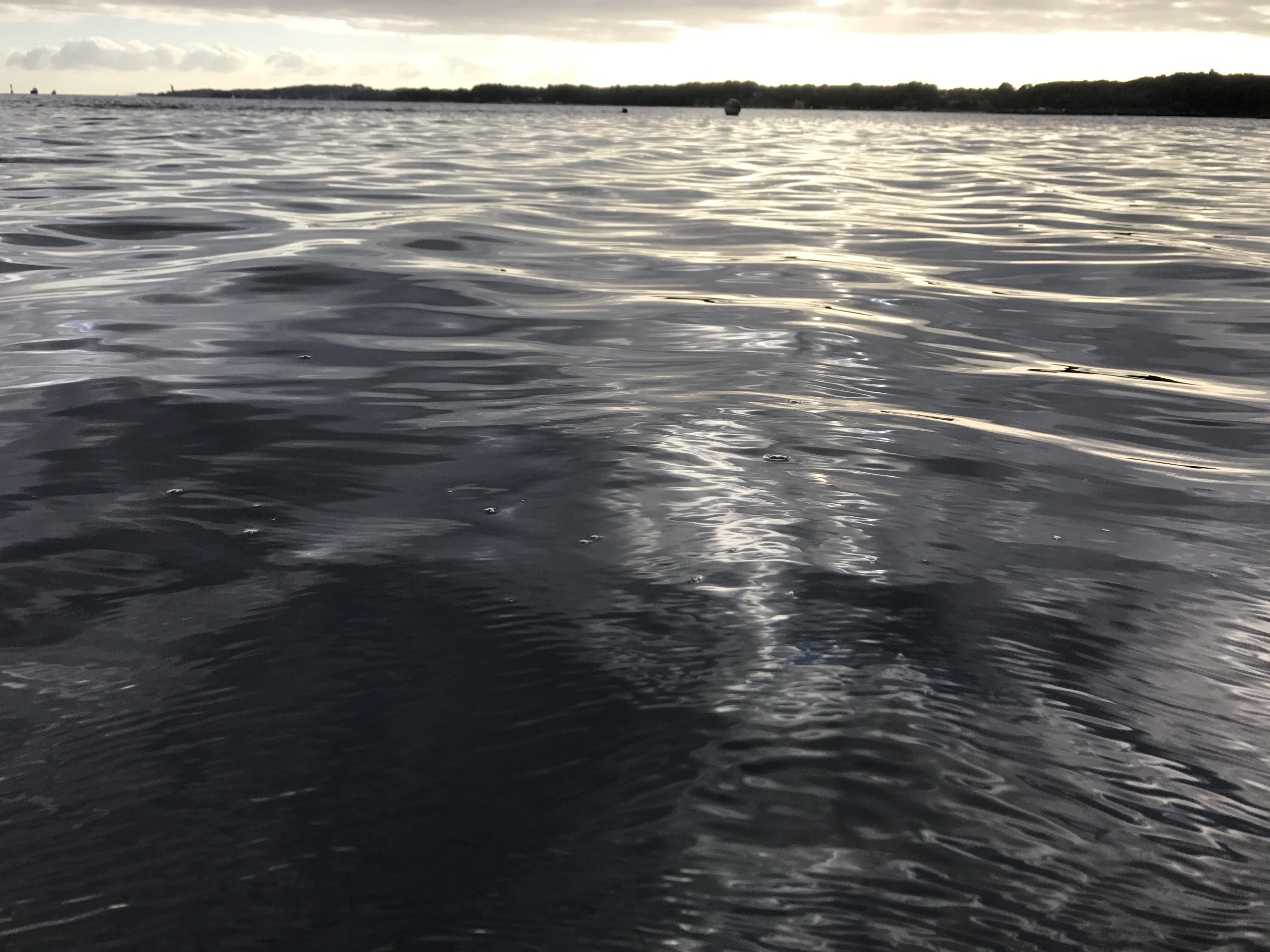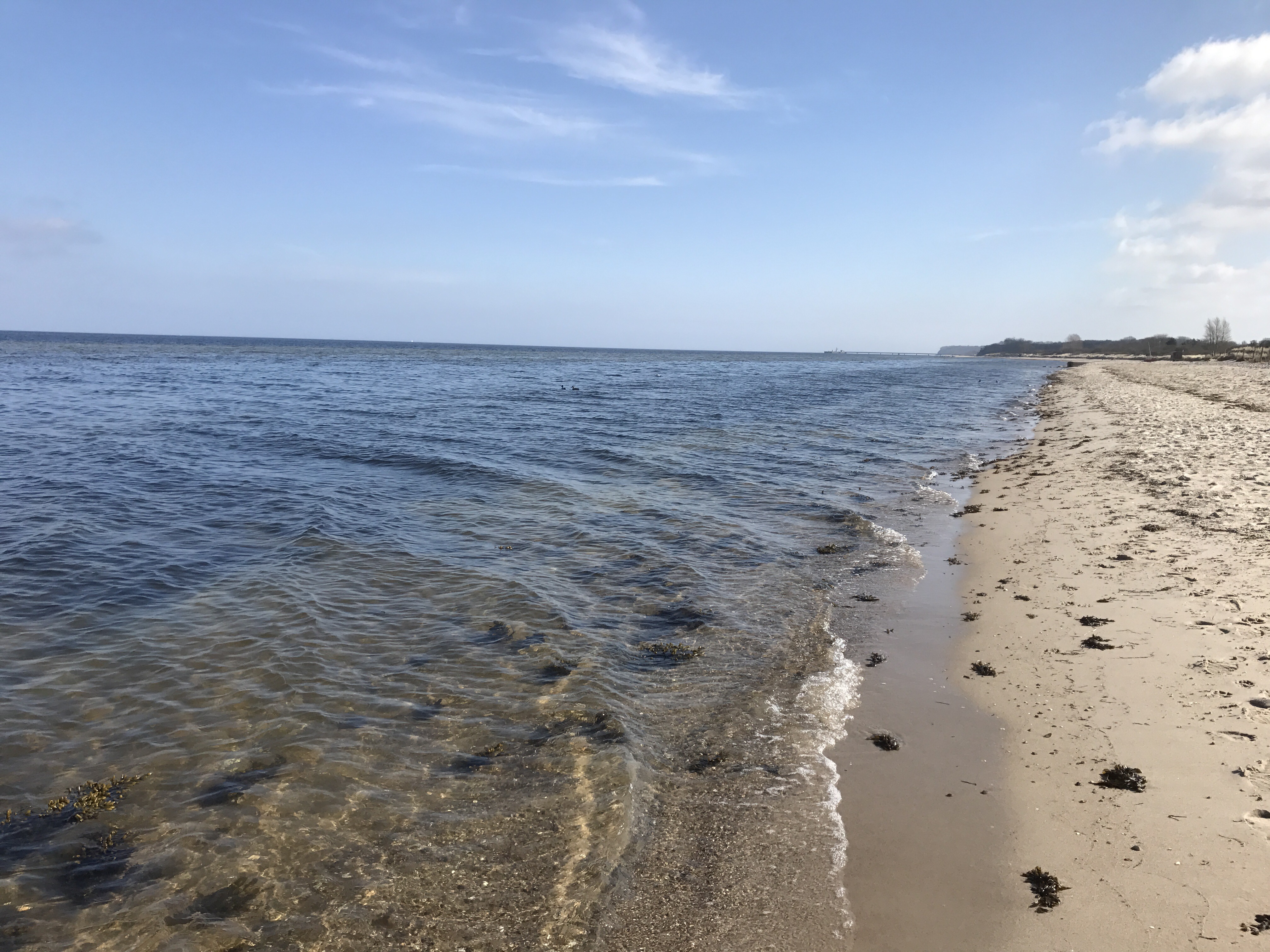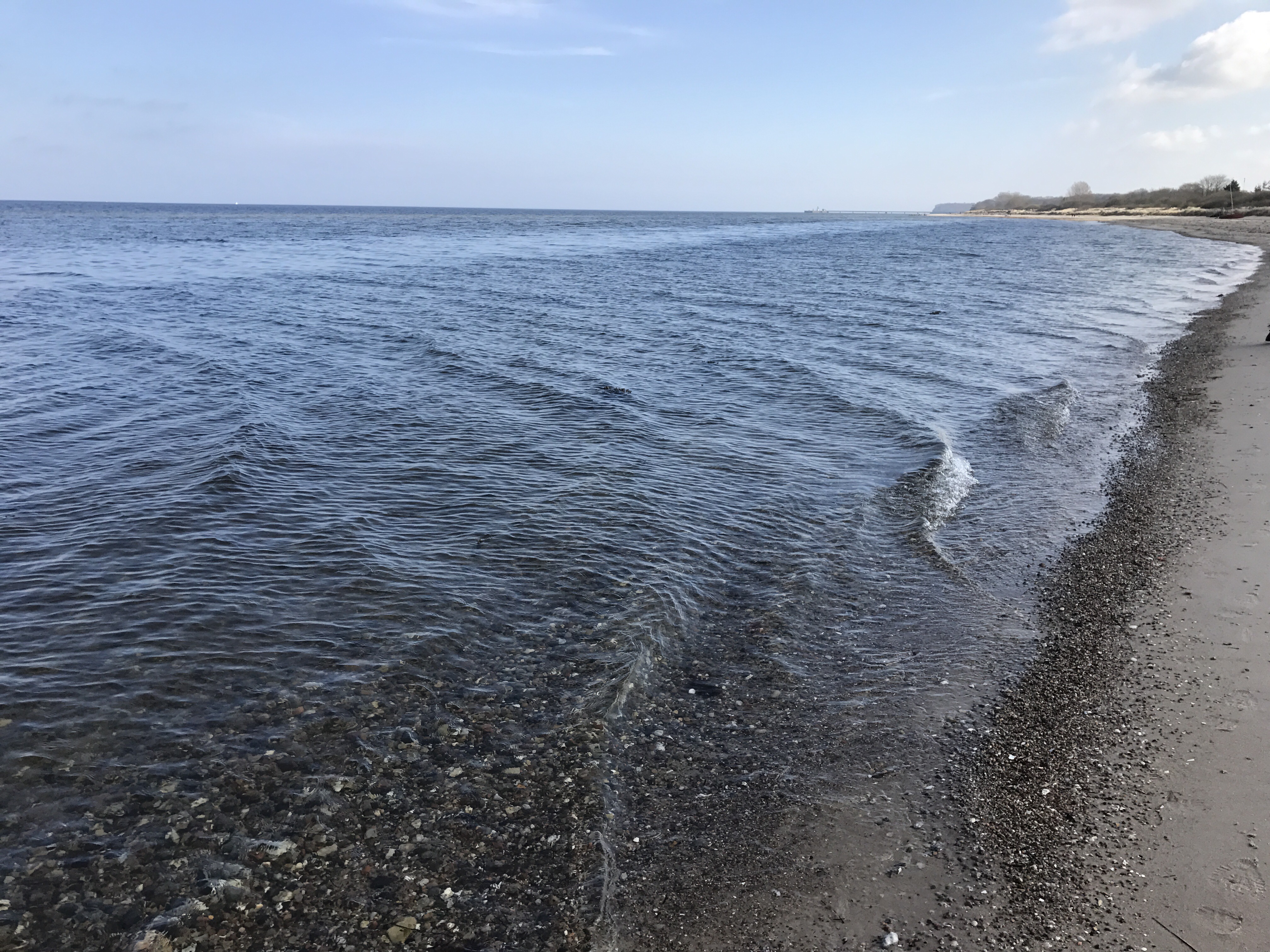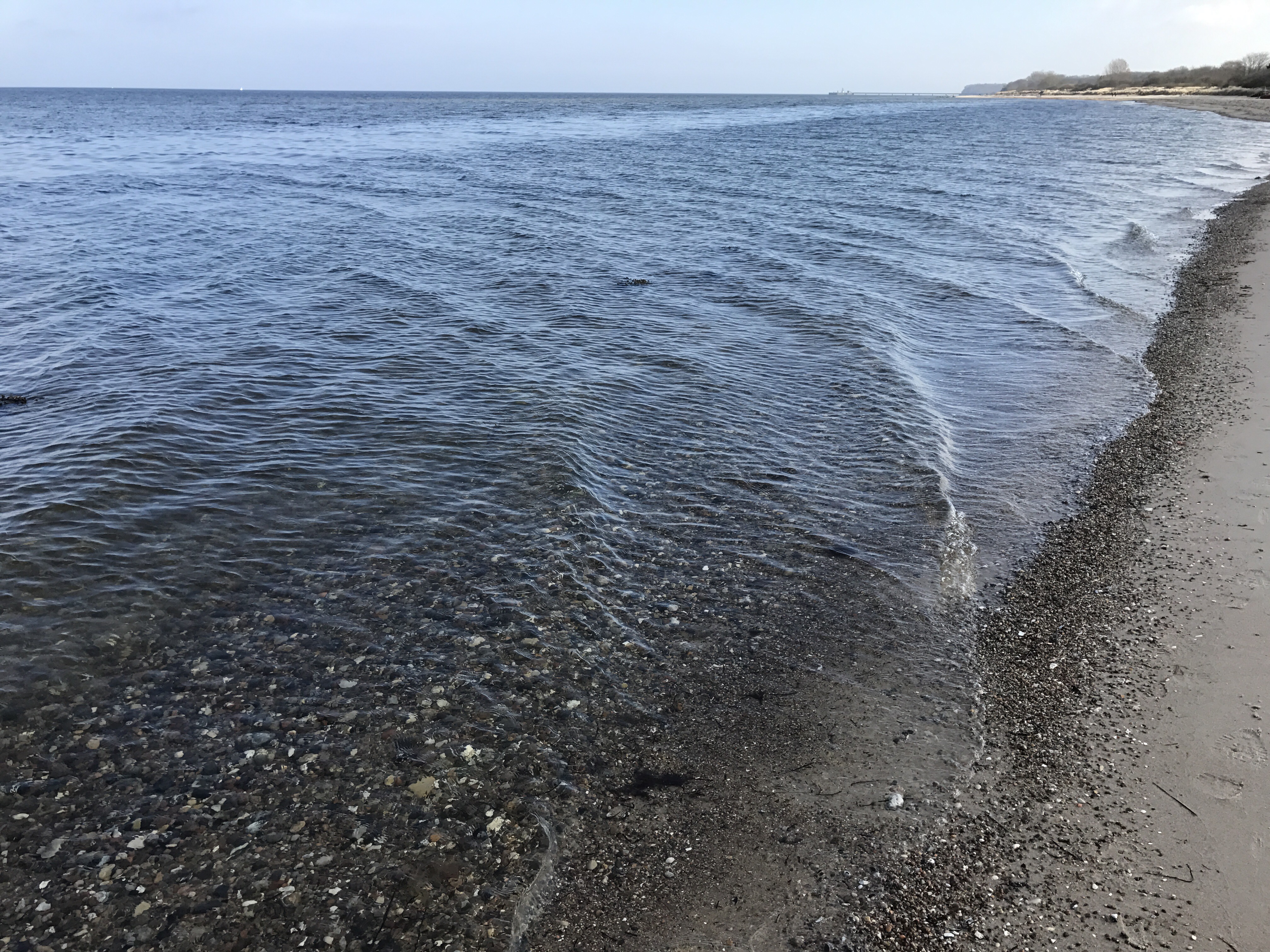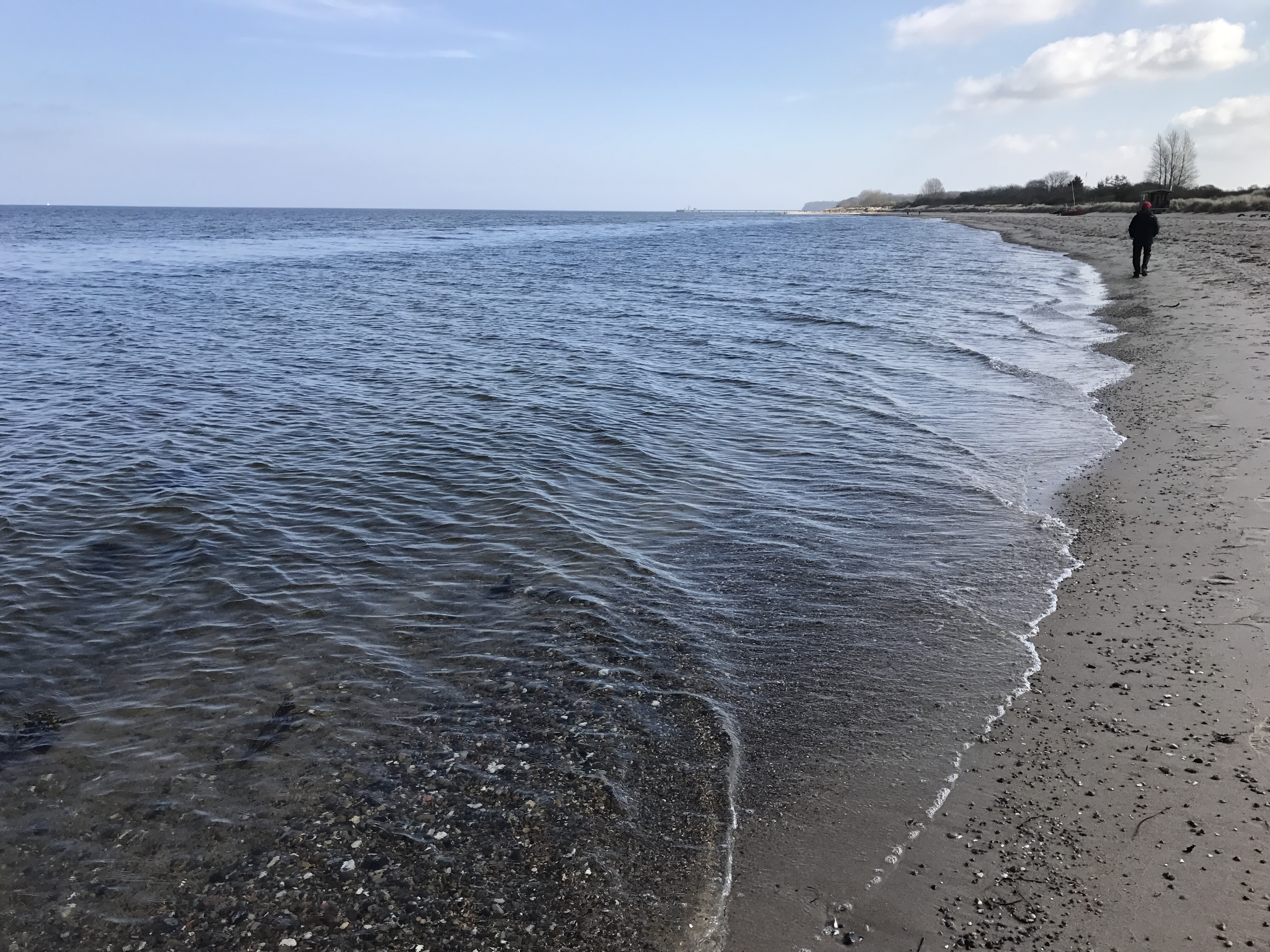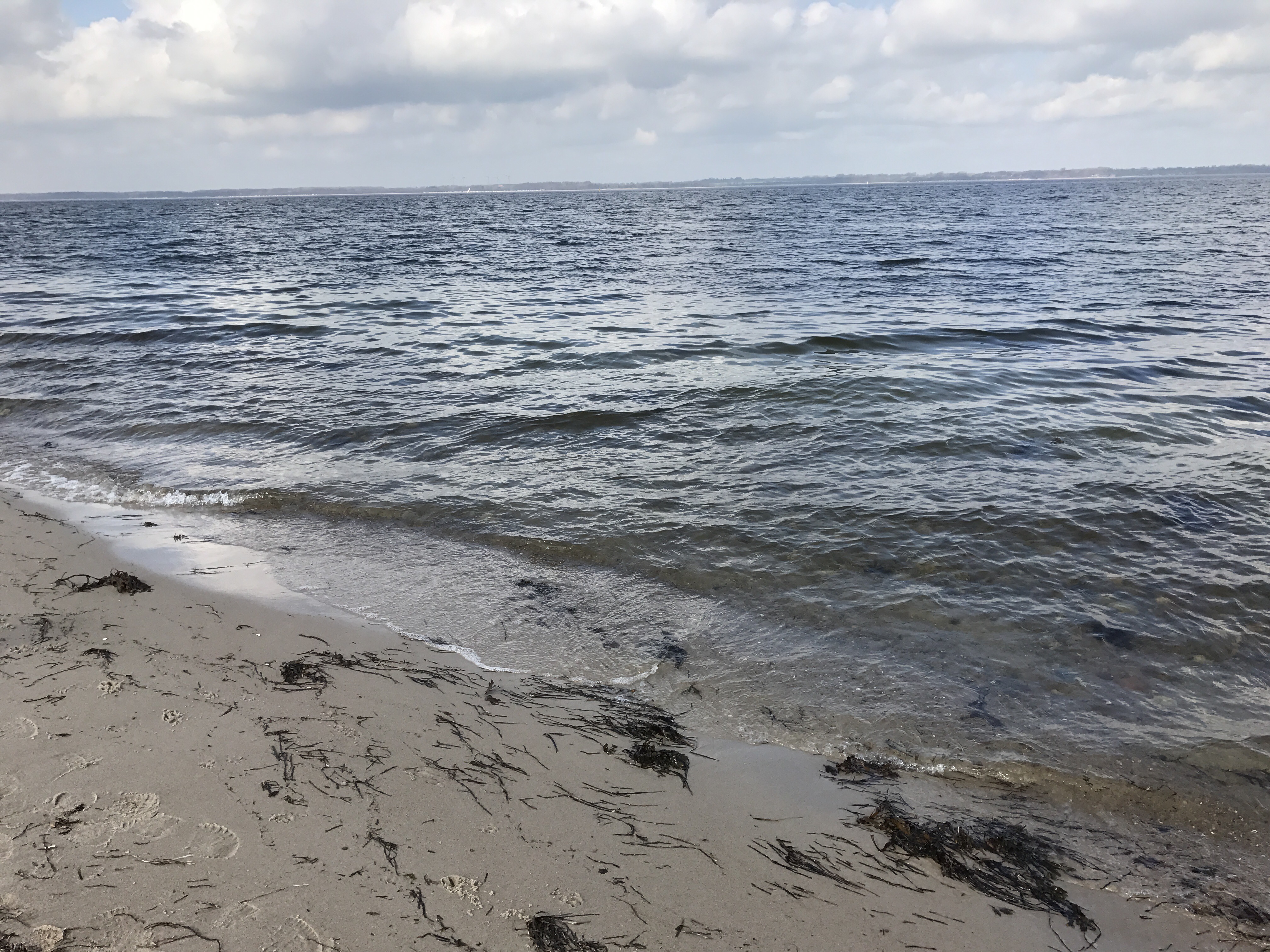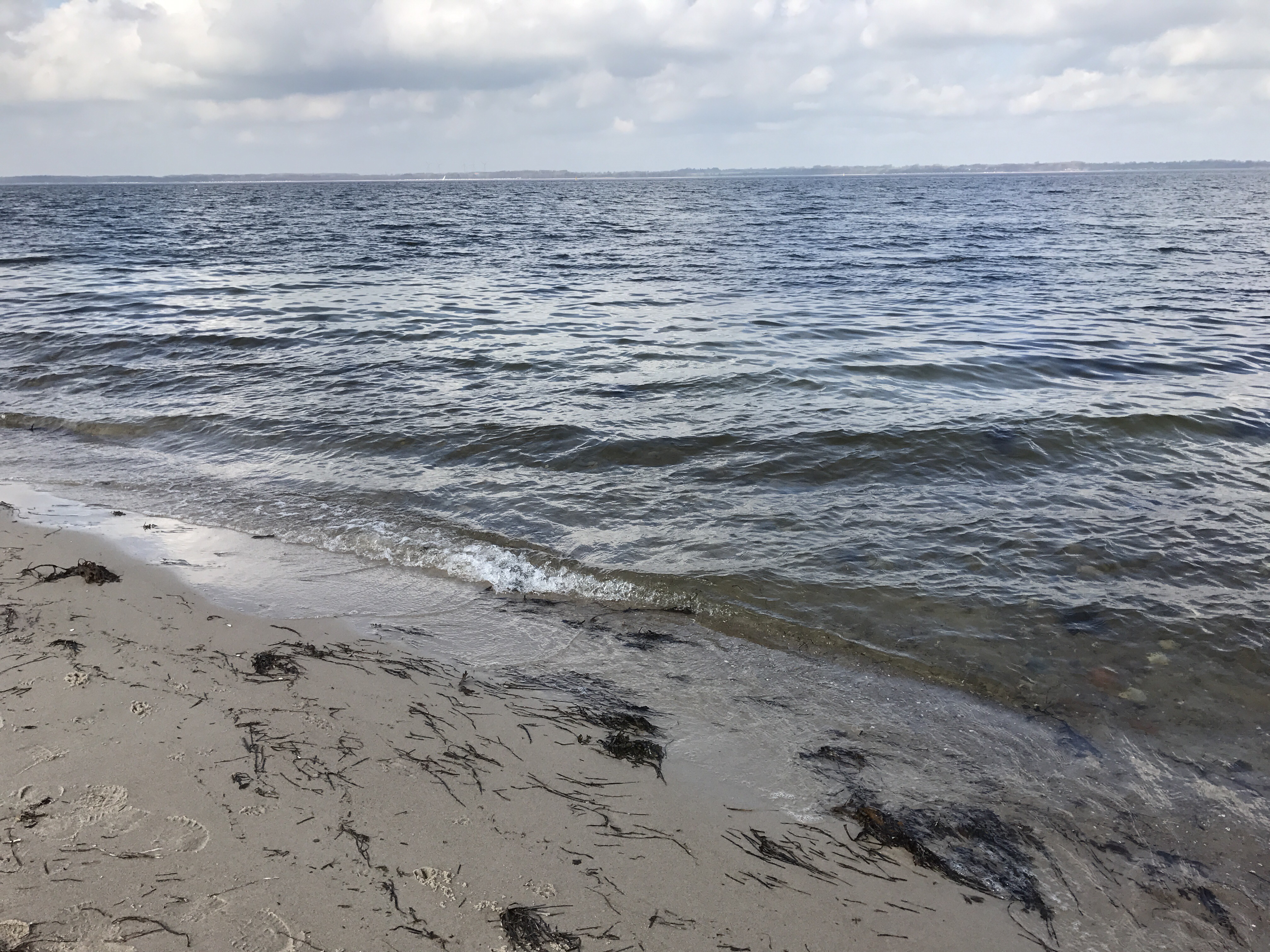Wakes and what they do to the sun’s reflection
When I said that wake watching made me happy last week, did you really think those were all the wakes I was going to show you? Ha! No, I have plenty more! :-)
Today, I want to show you a couple that have one thing in common: the way that they show up against the sun’s reflection and thus become a lot more visible than they would be if they were just reflecting a uniformly blue or grey sky.
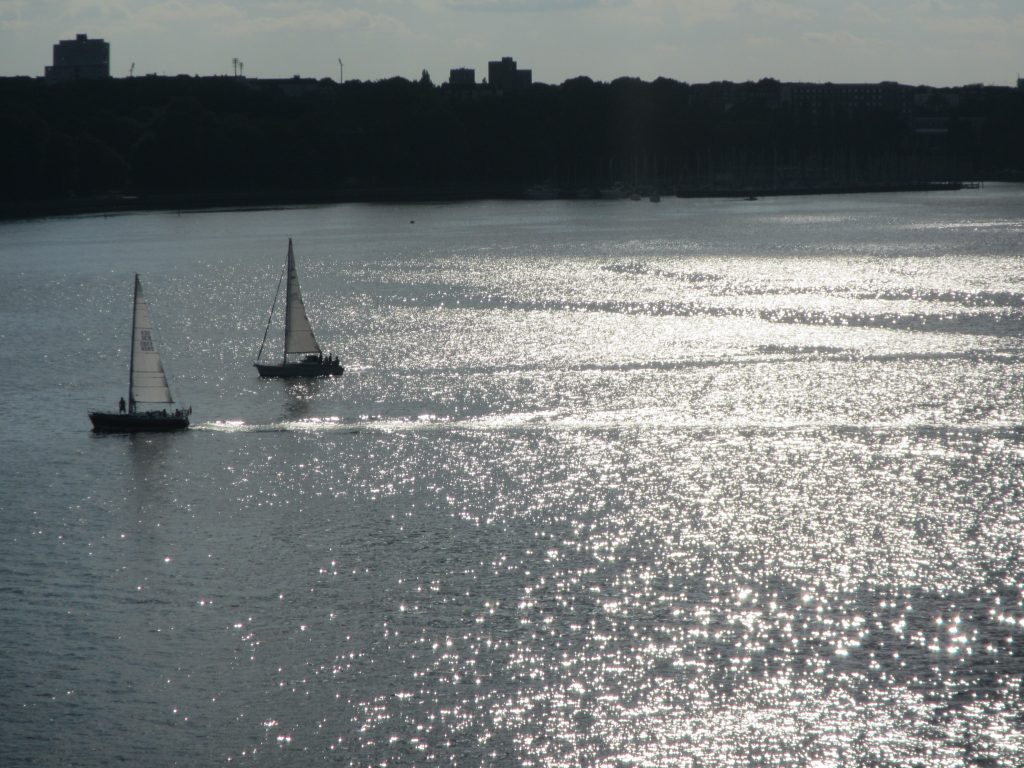
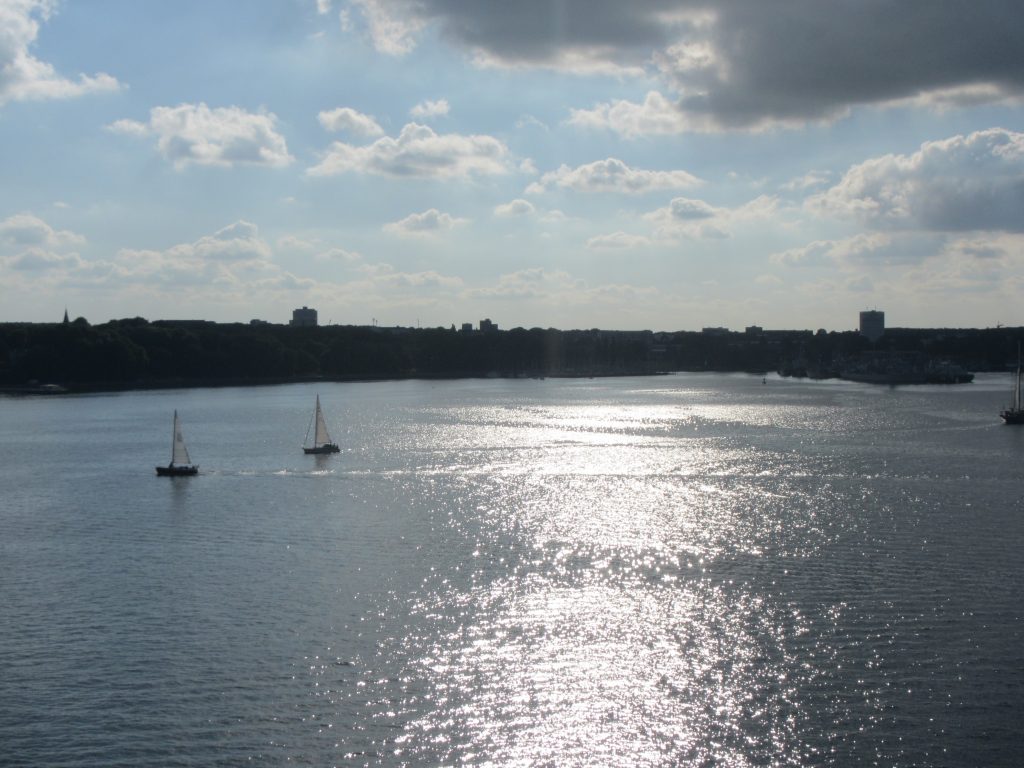

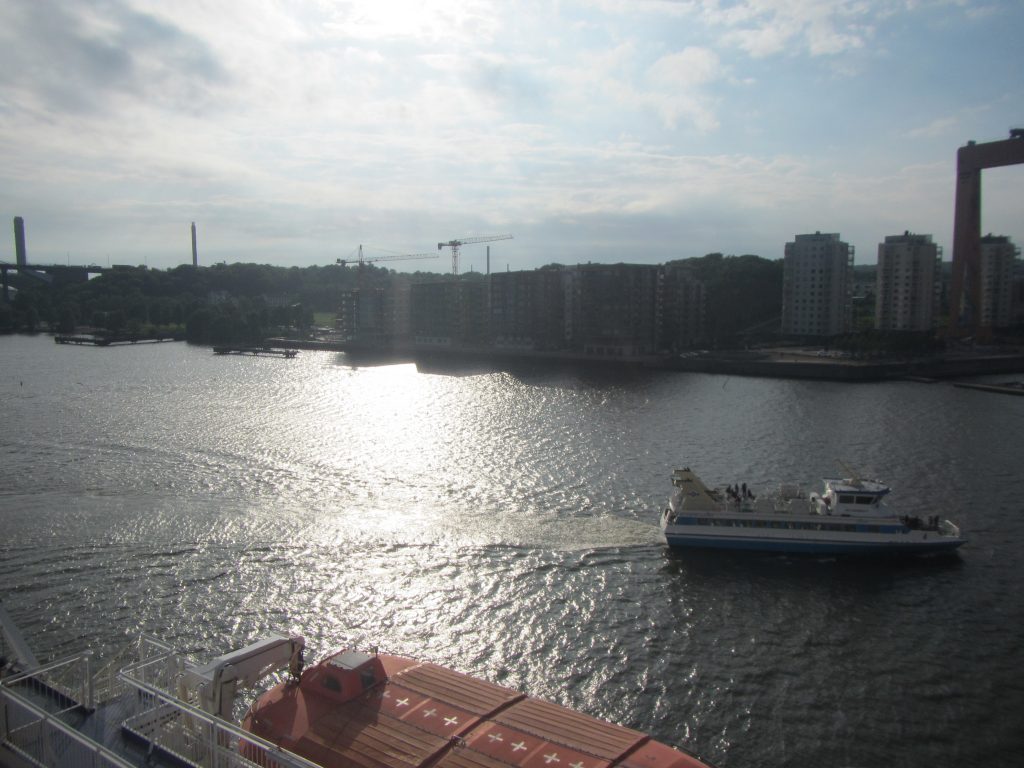
Huckepack
Absolutely fascinating to watch: The German Maritime Search and Rescue Service’s tug driving up on one of their larger vessels. Good thing I volunteered to watch all our equipment at the Port of Maasholm when we were driving back from the teacher training at Lotseninsel and everybody else was on a later boat… ;-)
I only realized too late what was going on, so I didn’t get a movie, but the small boat sped up and just drove up the stern of the other boat. So cool!
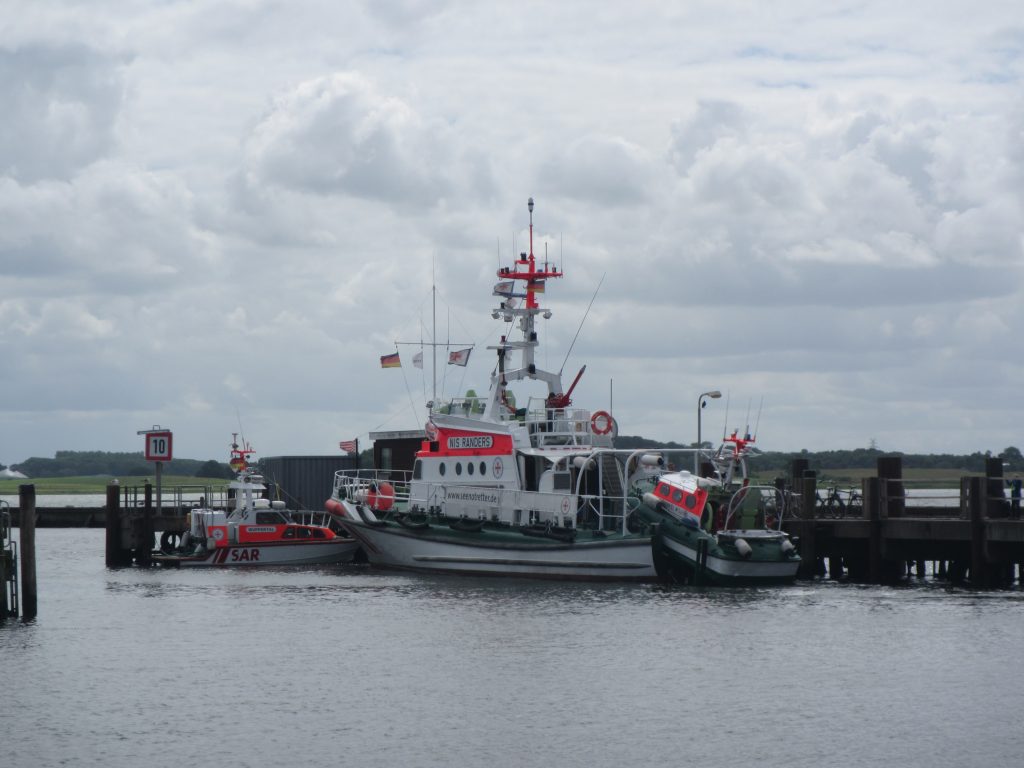
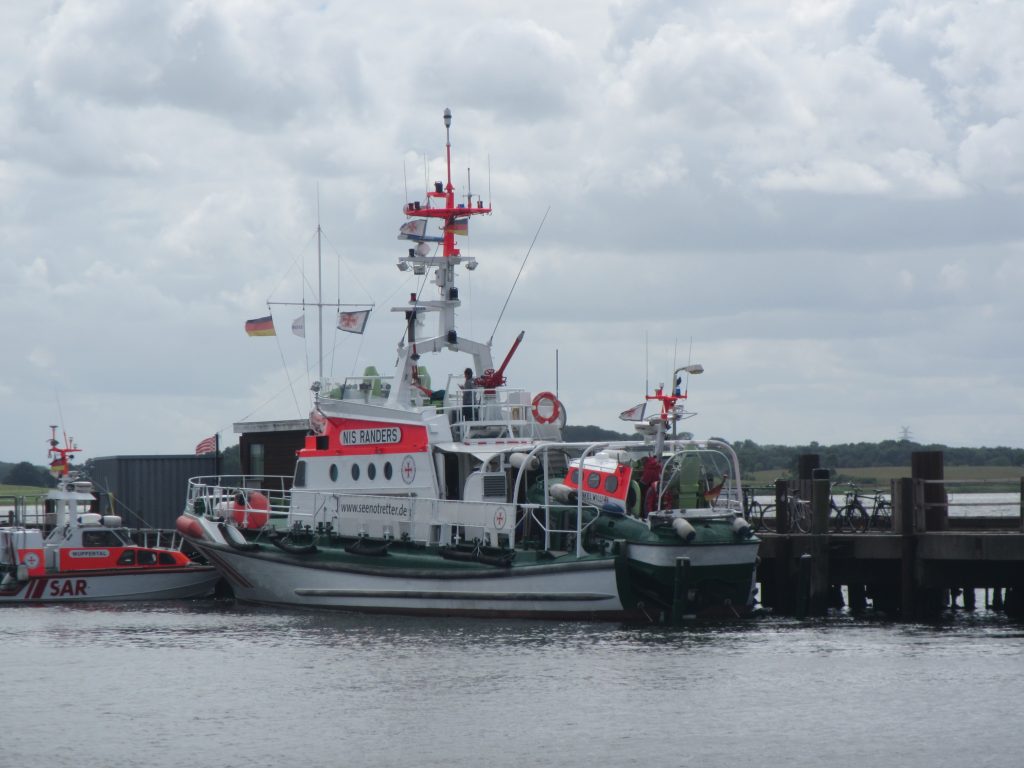
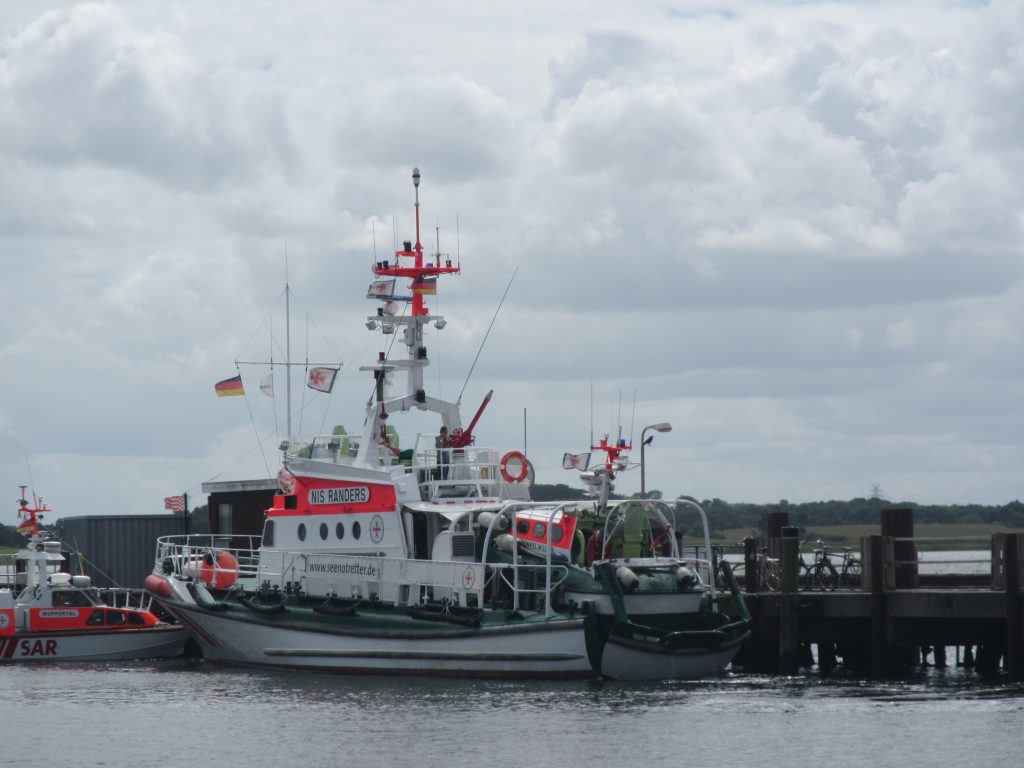
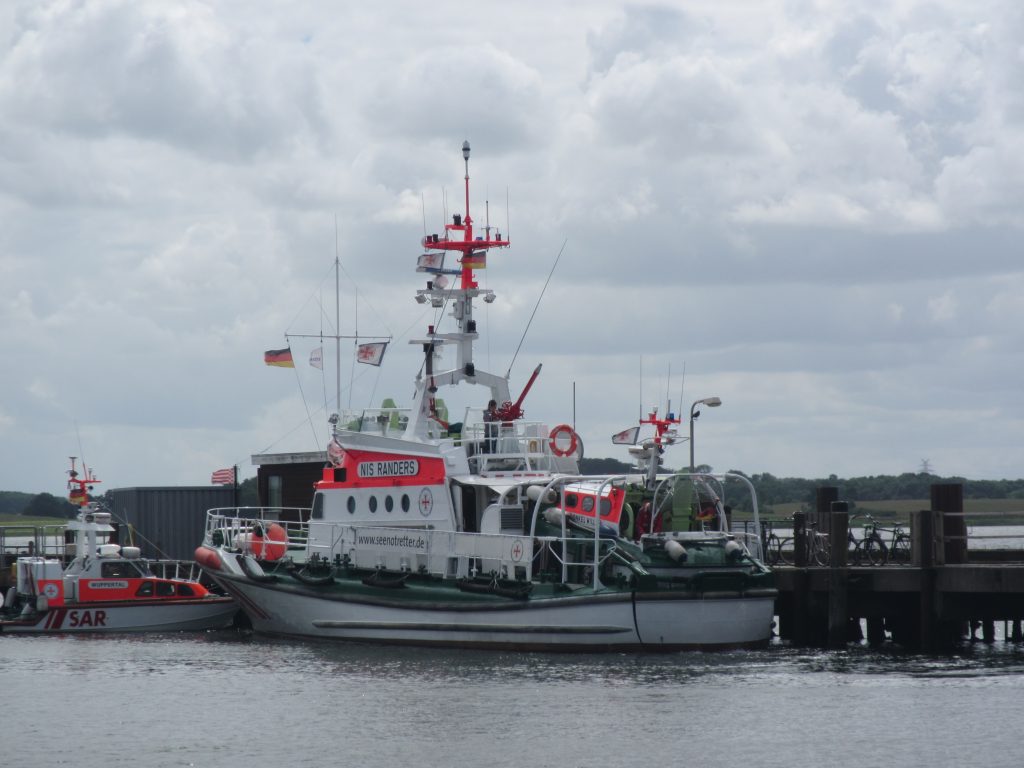
Weekend wave-watching
Of course I did not only take pictures of lighthouses and instructional activities during the teacher training at Lotseninsel last week. I also took TONS of pictures of water! Some of which I’ll share with you now.
For example below you see where the Schlei flows into the Baltic Sea. This is actually a fairly narrow outlet, and you can see the strong current and the eddies that are formed where it flows into the Baltic Sea! It had been raining a lot previously, so there was a lot of water trying to get out of the Schlei!
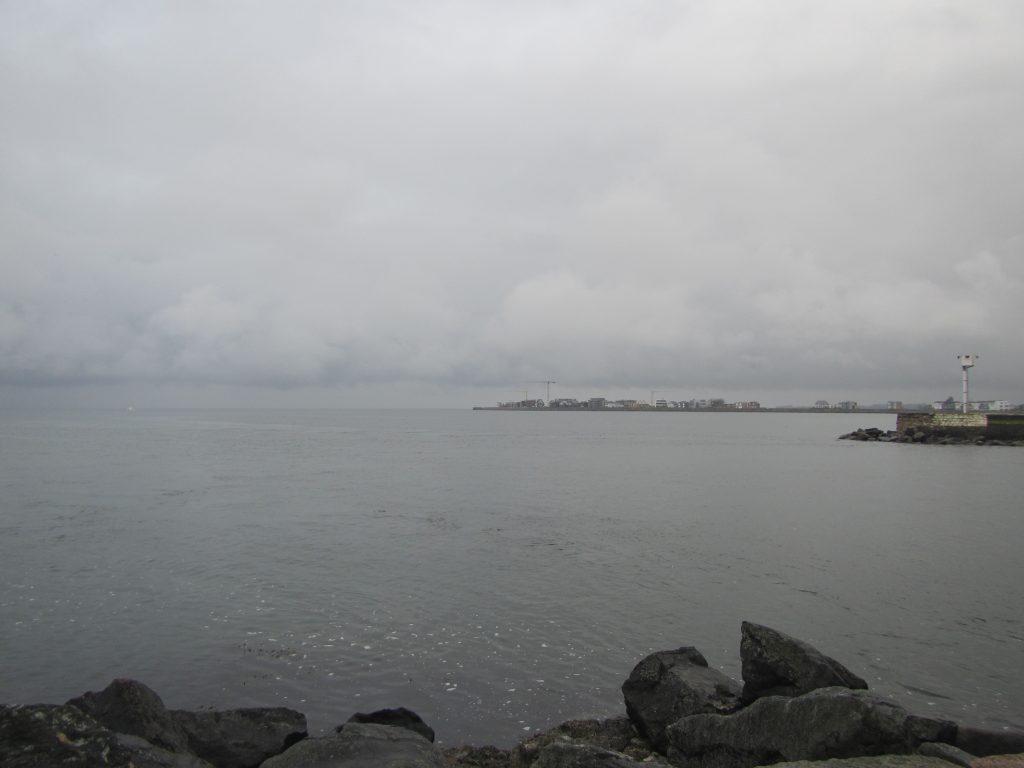
A similar pattern can be spotted at the outlet of the marina, but in this it’s mainly wind-driven.
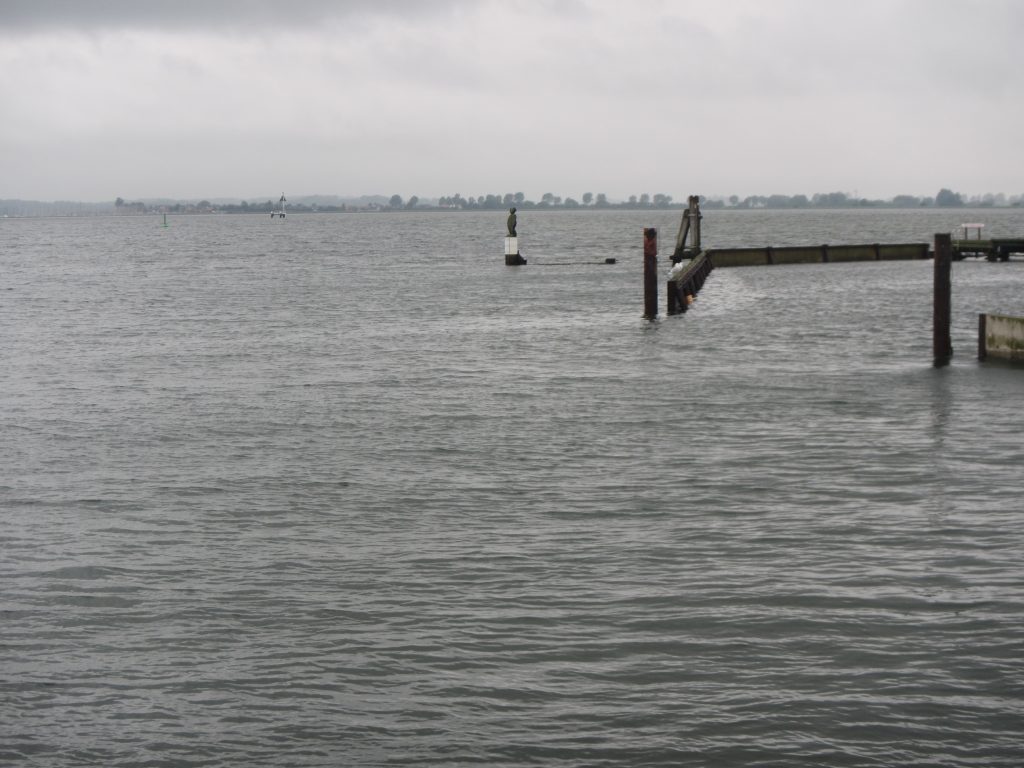
And very nice here: Long swell and short wind waves on top of it.
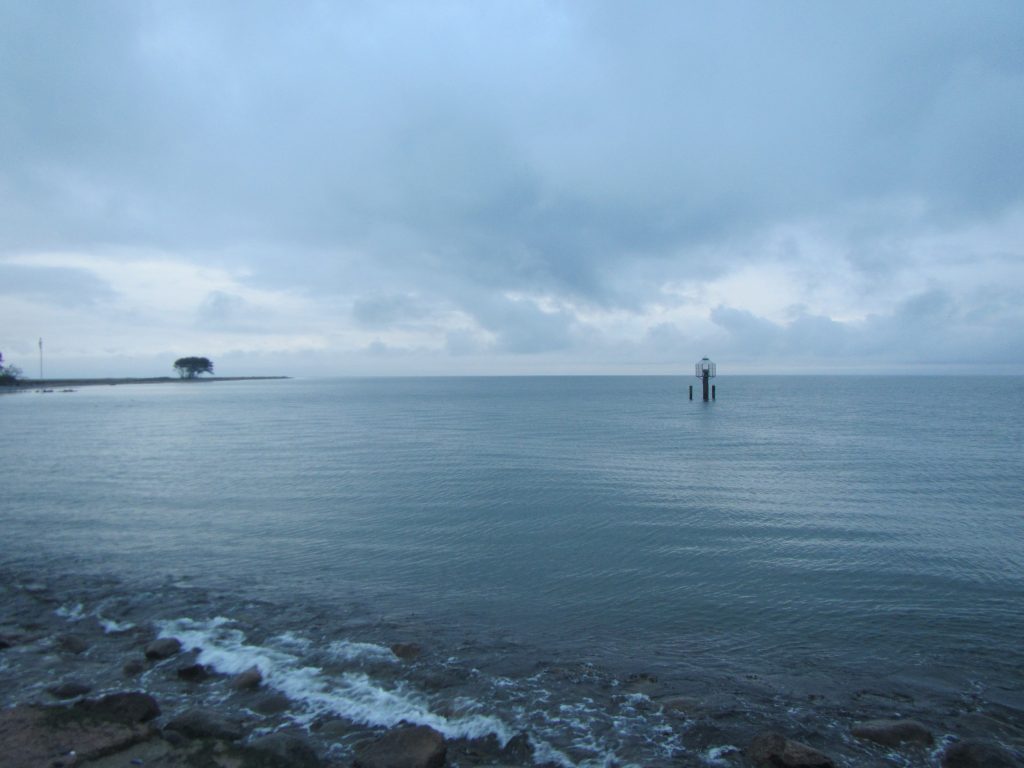
Of course I also looked at wakes. This is a particularly nice one:
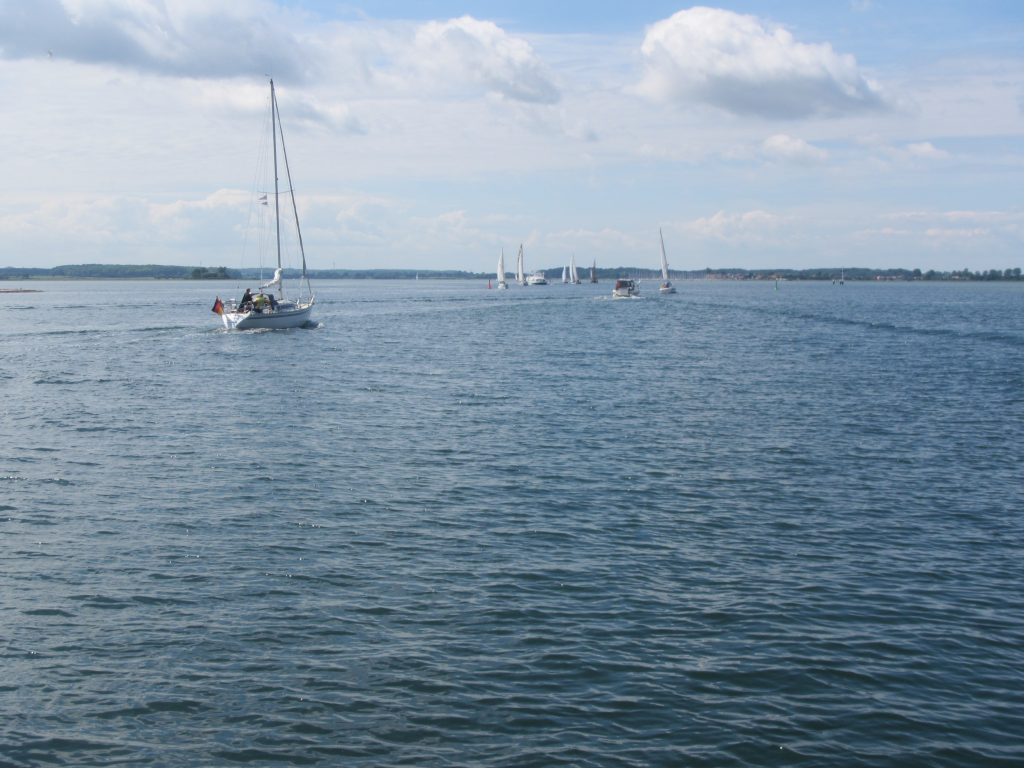
Oh, and reflections. Isn’t it super pretty how the mast gets reflected with all these little twists and turns?
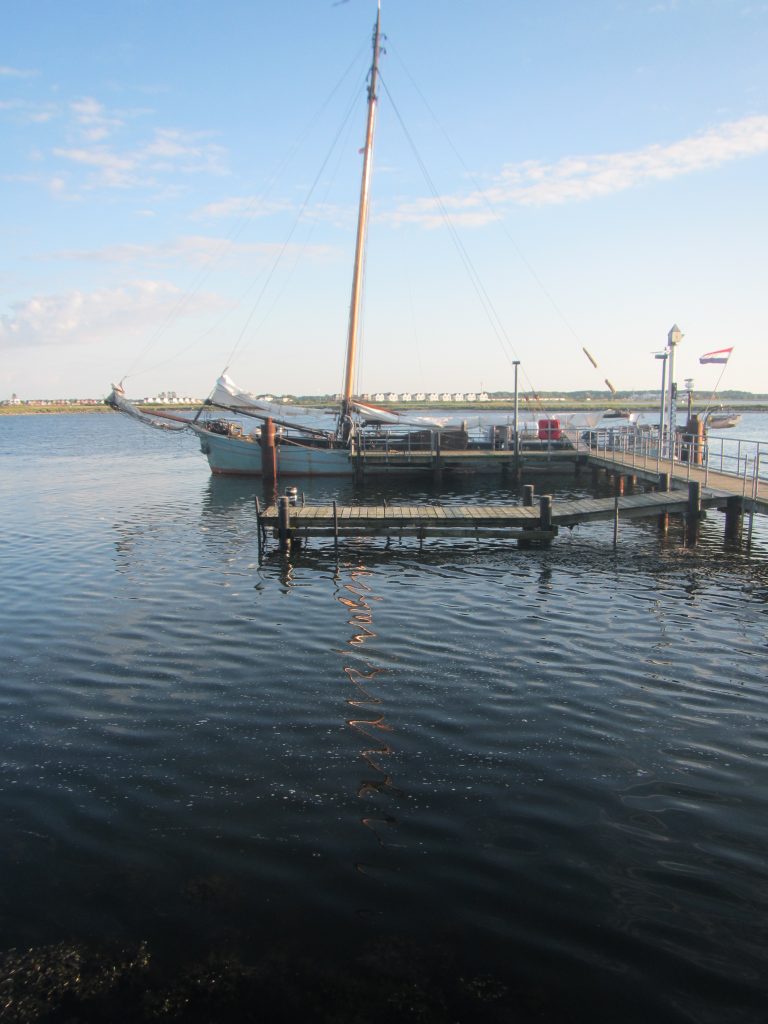
And then we had some shielding from the wind, and waves only appearing after a certain fetch.
Btw, that’s the house we all — and all the teachers — stayed in.

Here we see waves being dampened by some algae stuff, and being deflected downwind of those patches.
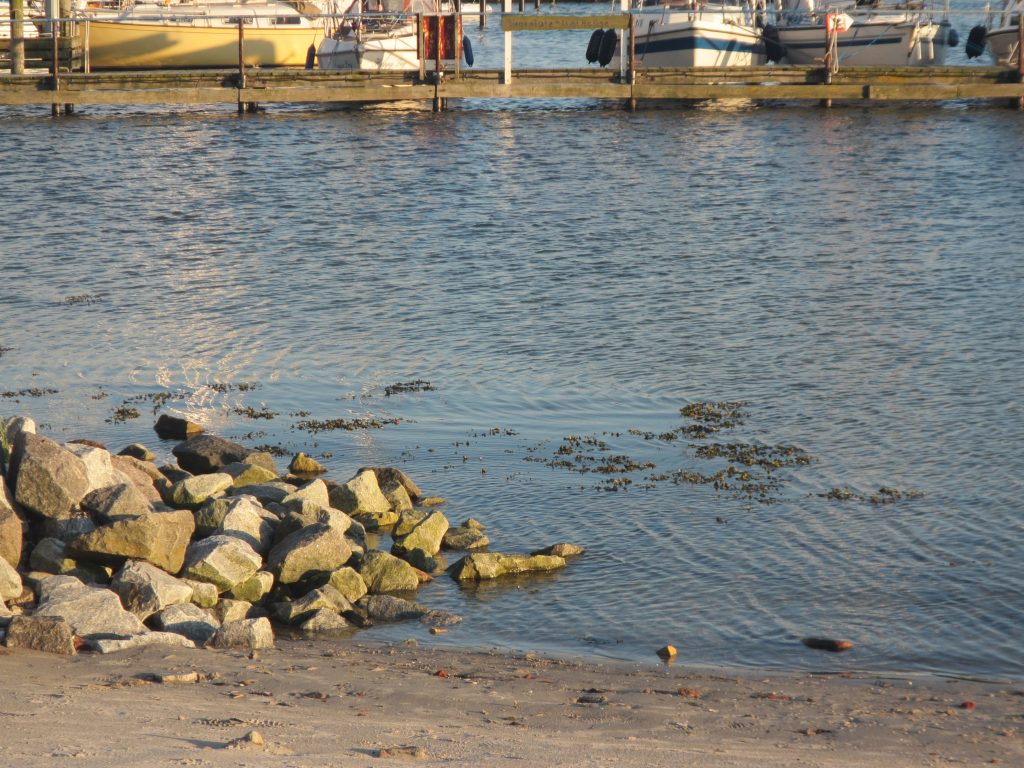
Here is another view of the strong current going out of the Schlei and the distinct separation between the two water masses.
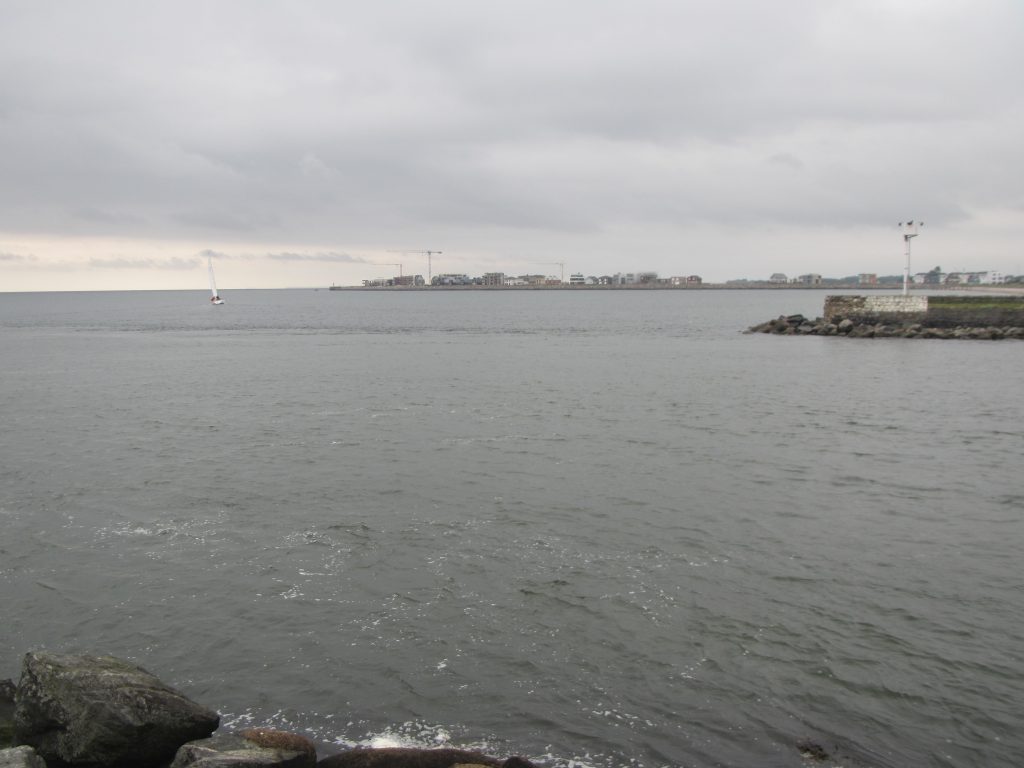
And now the same thing in combination with the sailboat’s wake. So pretty!

When we were on our way home, the wind had picked up substantially and we saw lots of foam stripes! Langmuir circulation, nowhere near the coast line.
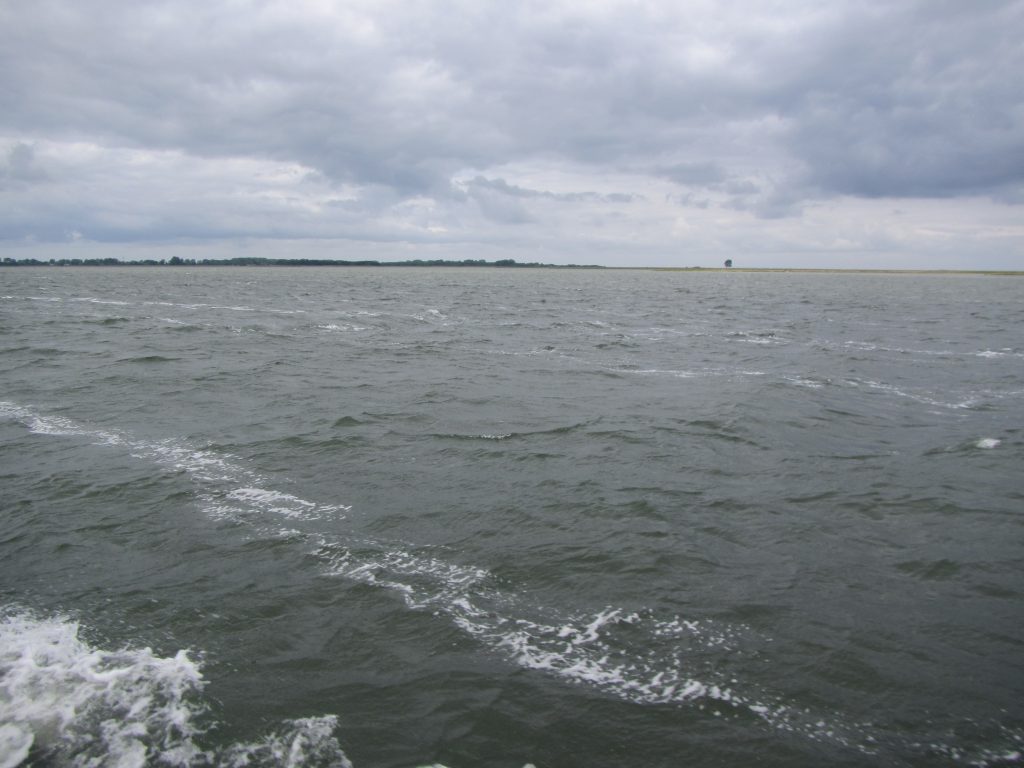
Here we get a last glimpse of the house we had stayed in… And more foam stripes!
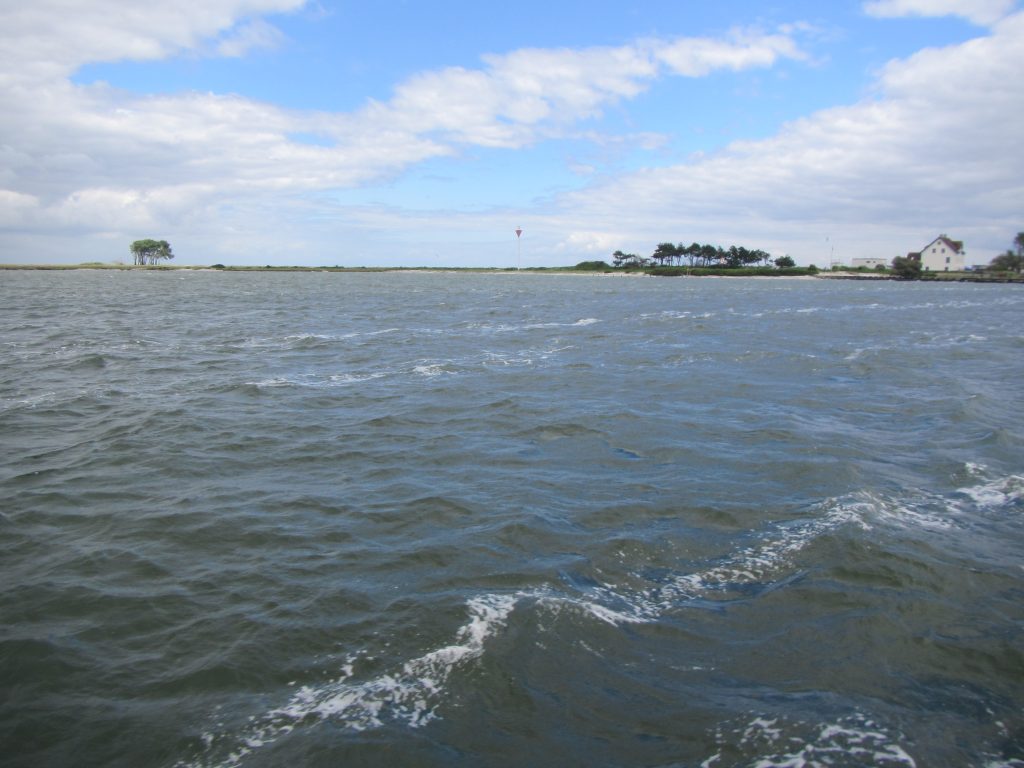
And some more ;-)
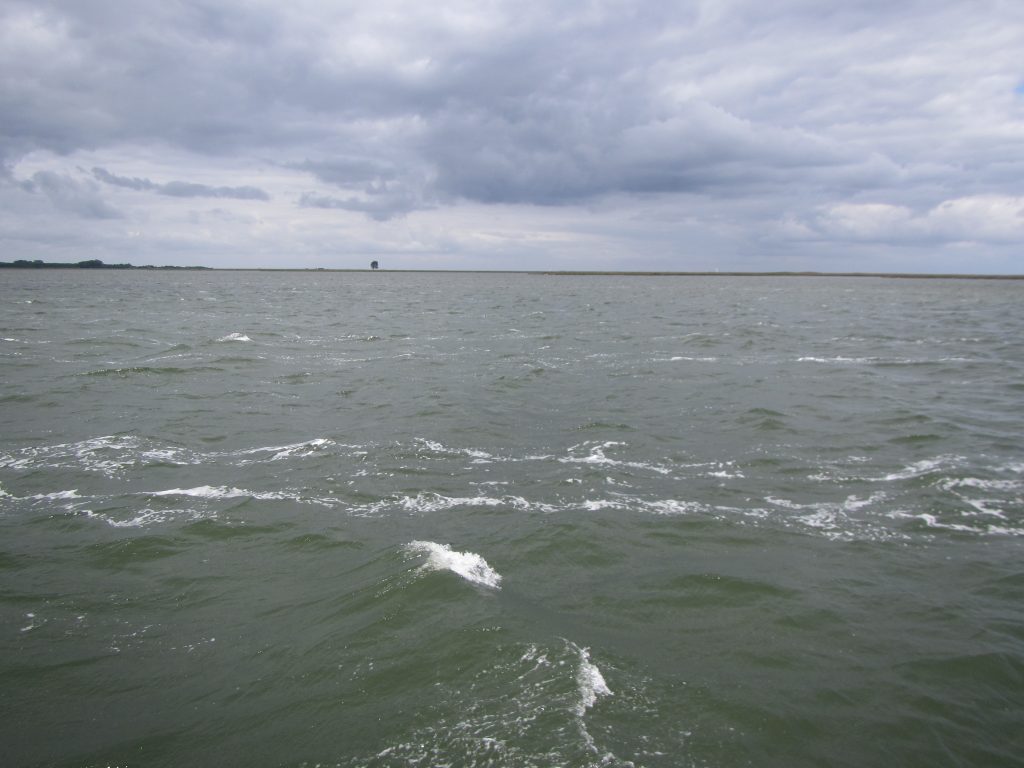
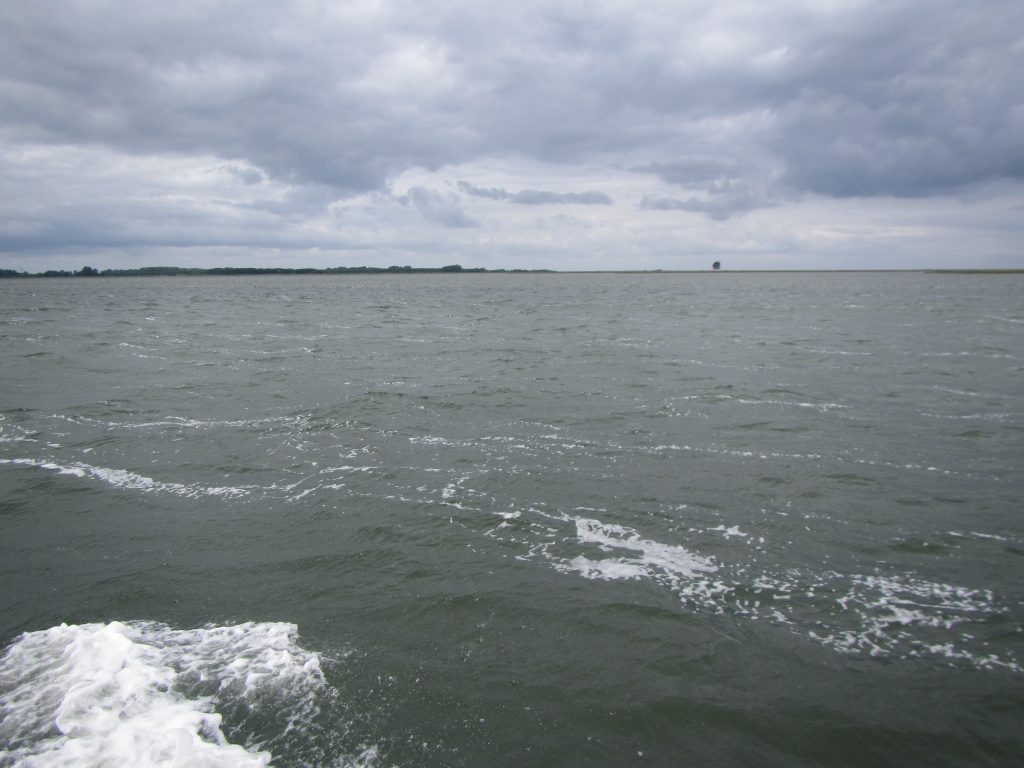
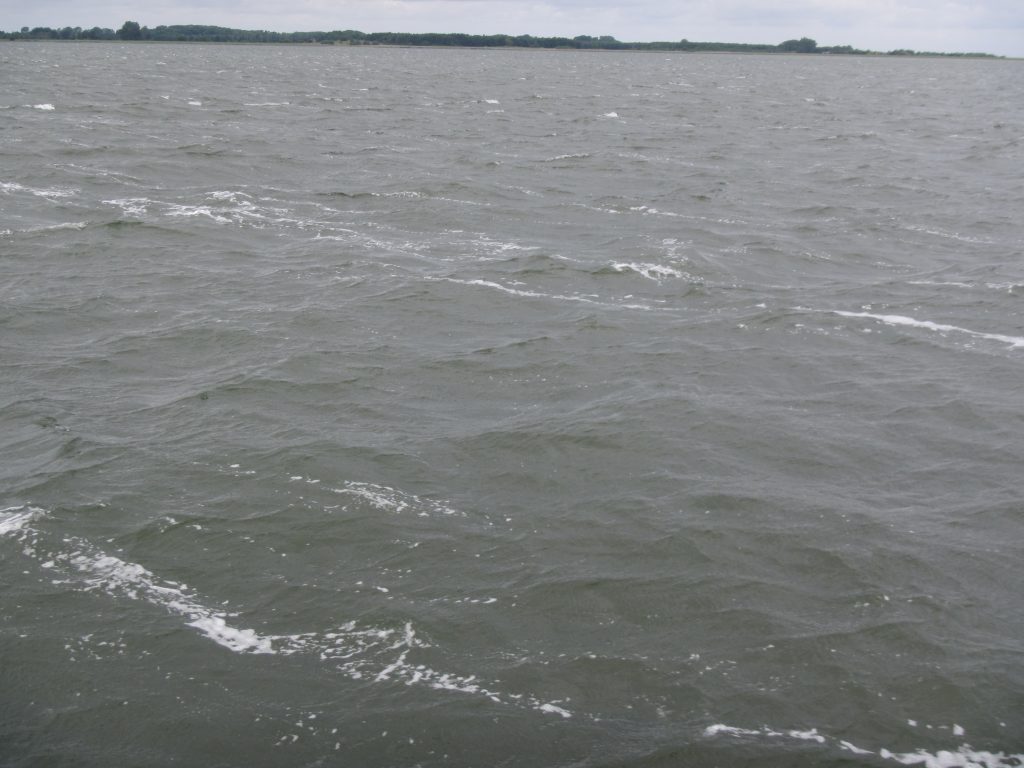
And then in Maasholm, we see the waves arriving upwind of the pier and then the tiny ones in the sheltered area. You can see a gust of wind somewhere in the foreground to the right, where there are all those small ripples in a darker patch.
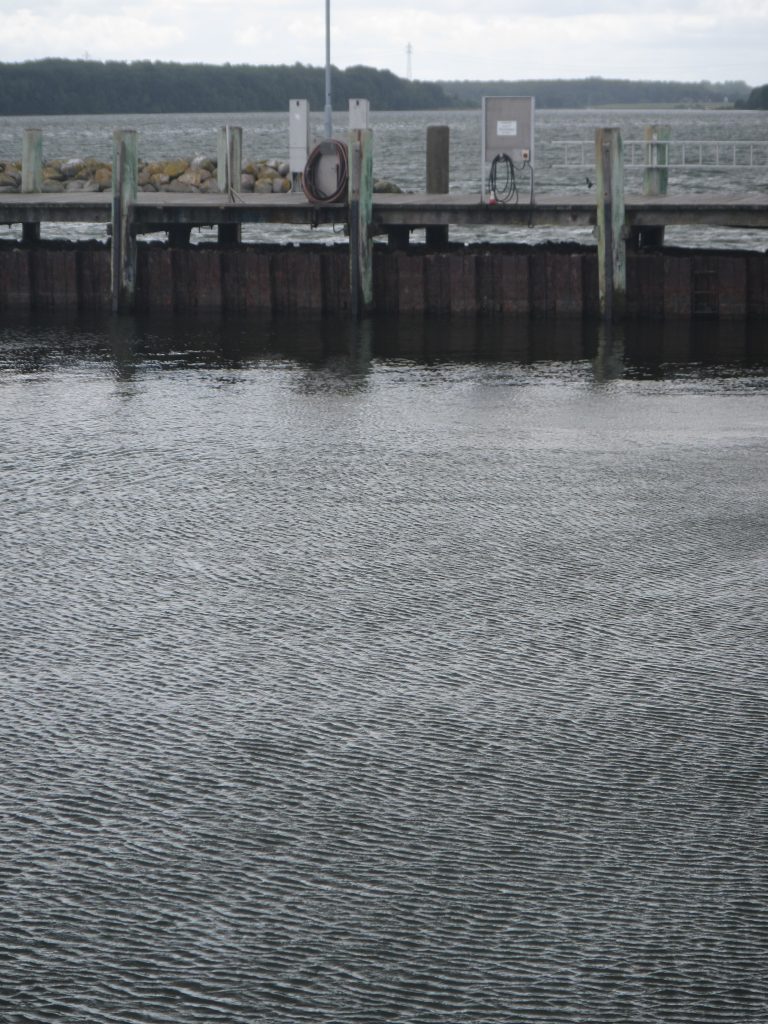
It was a pretty windy day!
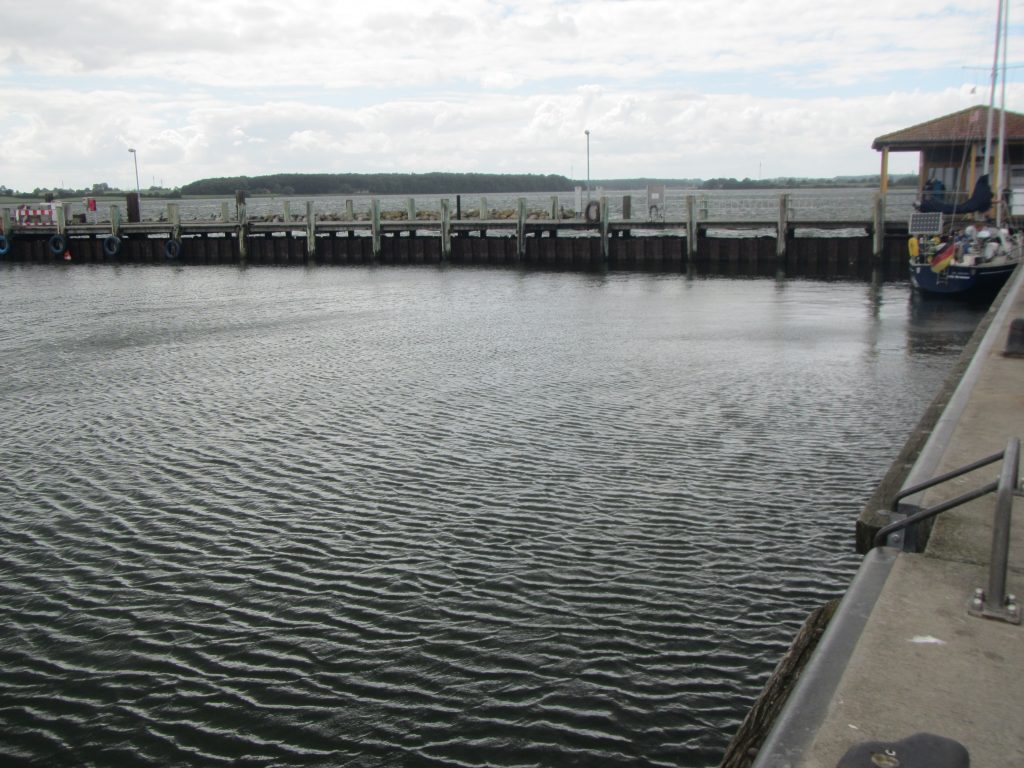
And more foam stripes…
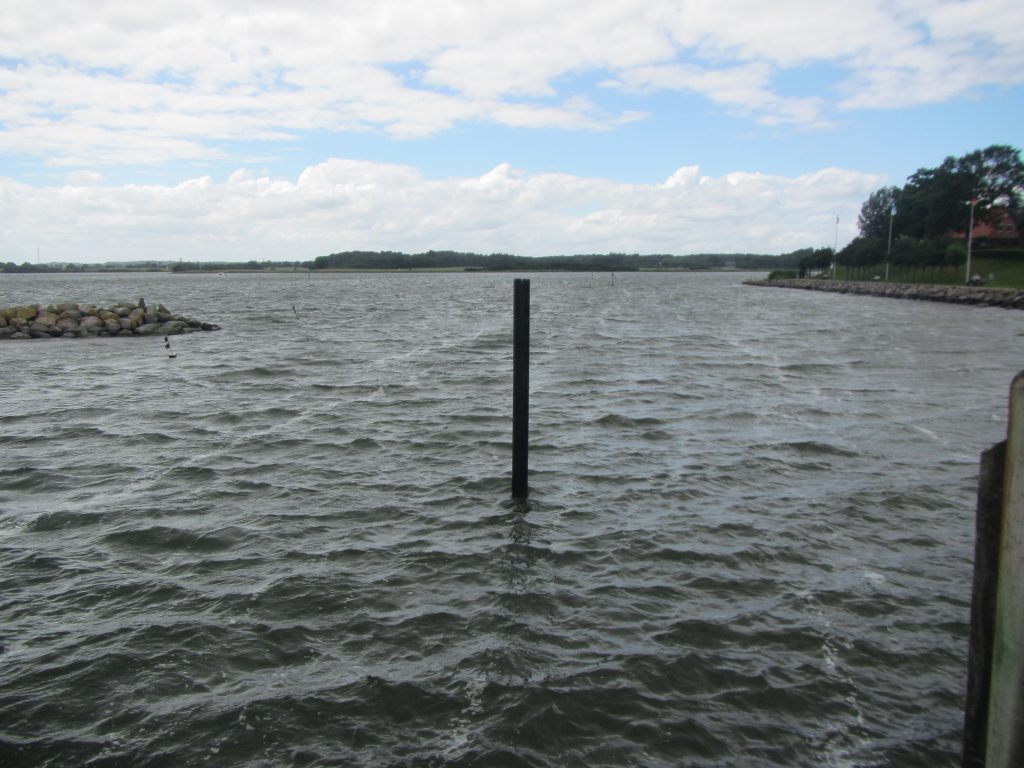
And a wake!

And another wake!

And just a couple of pictures of water, because I love water.
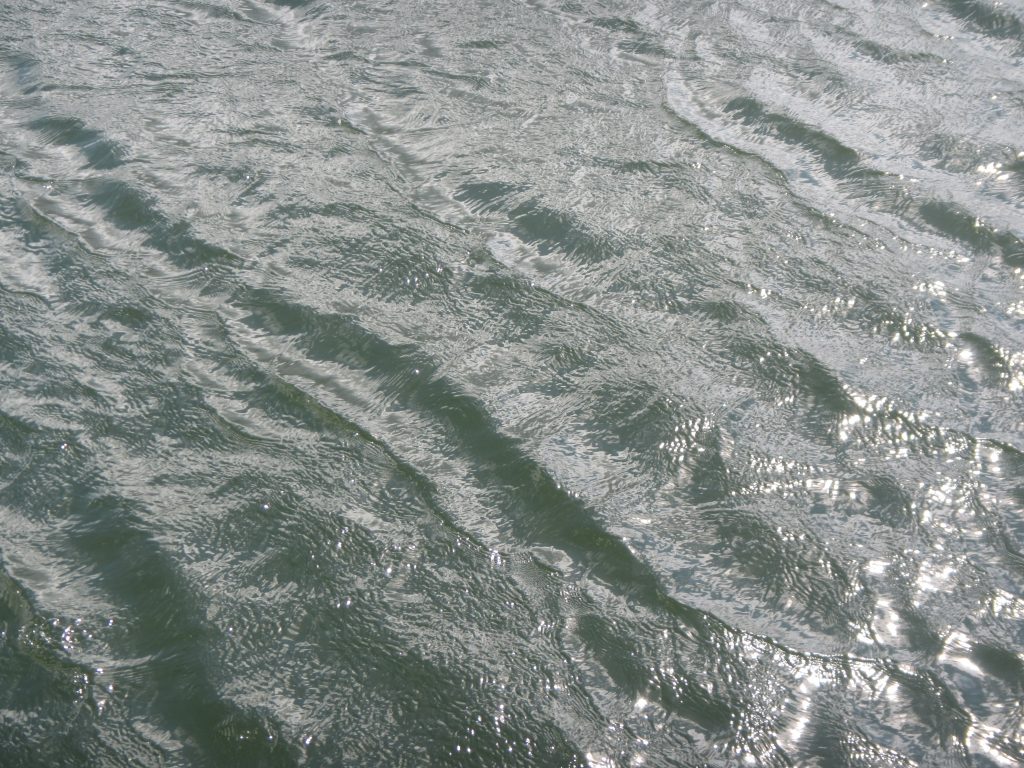

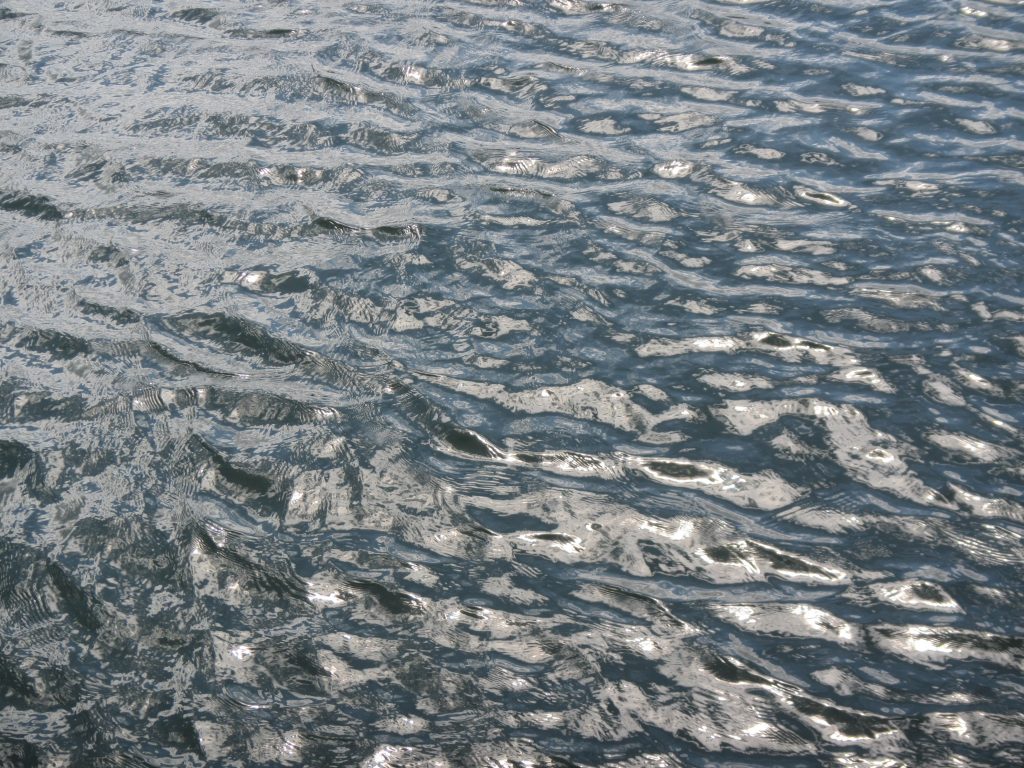

Teacher training at Lotseninsel
As I mentioned yesterday, I recently contributed to a teacher training on Lotseninsel, a tiny island on the Baltic Sea coast. The training was run by the Ozean:Labor of the Kieler Forschungswerkstatt, and we spent Friday to Sunday there. I’m going to show you some impressions of that weekend here.
At first, it did not look promising:
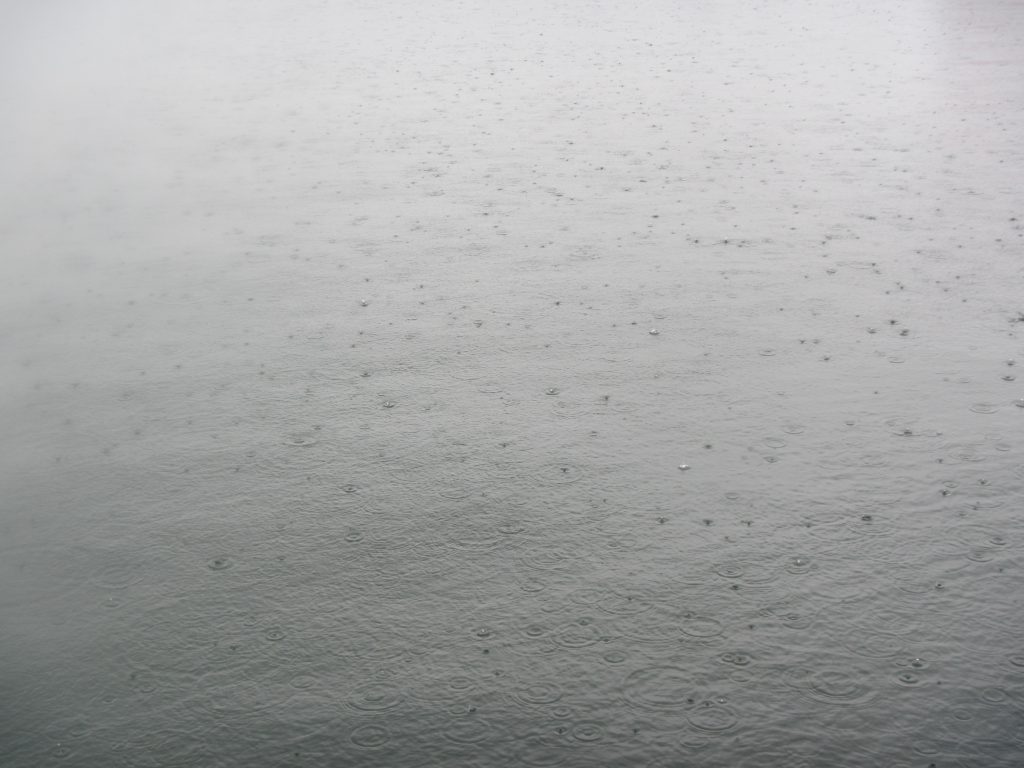
We had to pack A LOT of equipment on a small boat in pouring rain to bring everything over to the island.
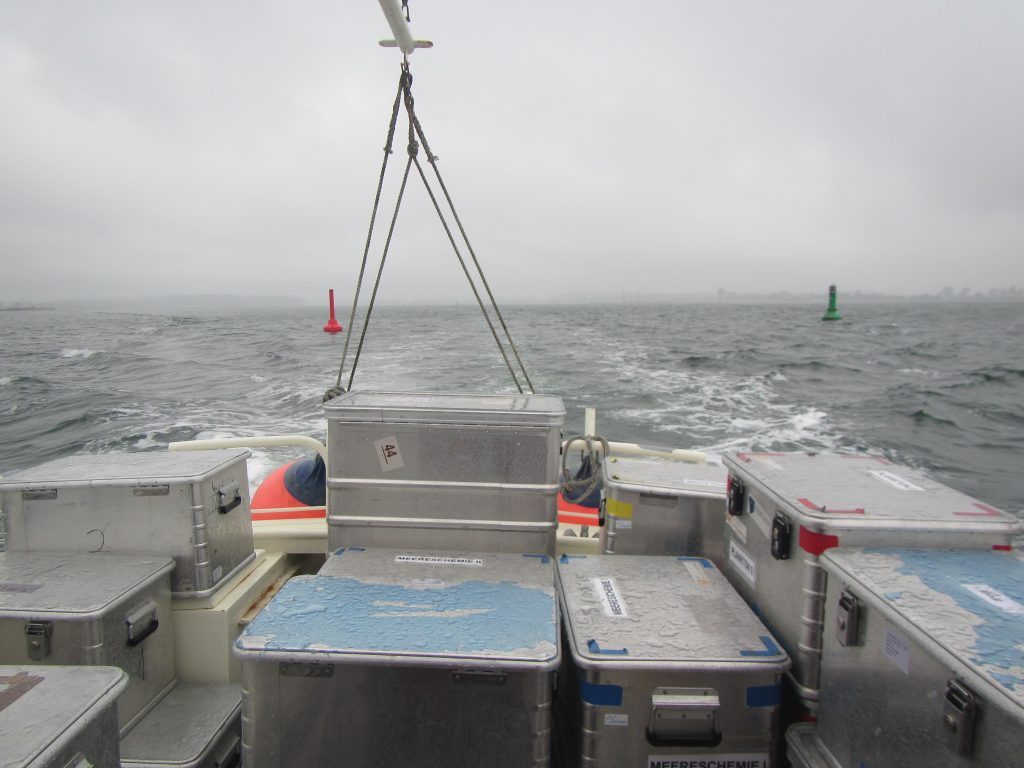
After unpacking all that stuff, we went to test some instrumentation in the pouring rain. This is our cute ROV:

In the evening, when all the teachers had arrived, we started with the workshops and continued until late in the night. Below you see two groups of teachers working on 3×3 m stretches of the beach, collecting plastic to map the pollution of the beach.
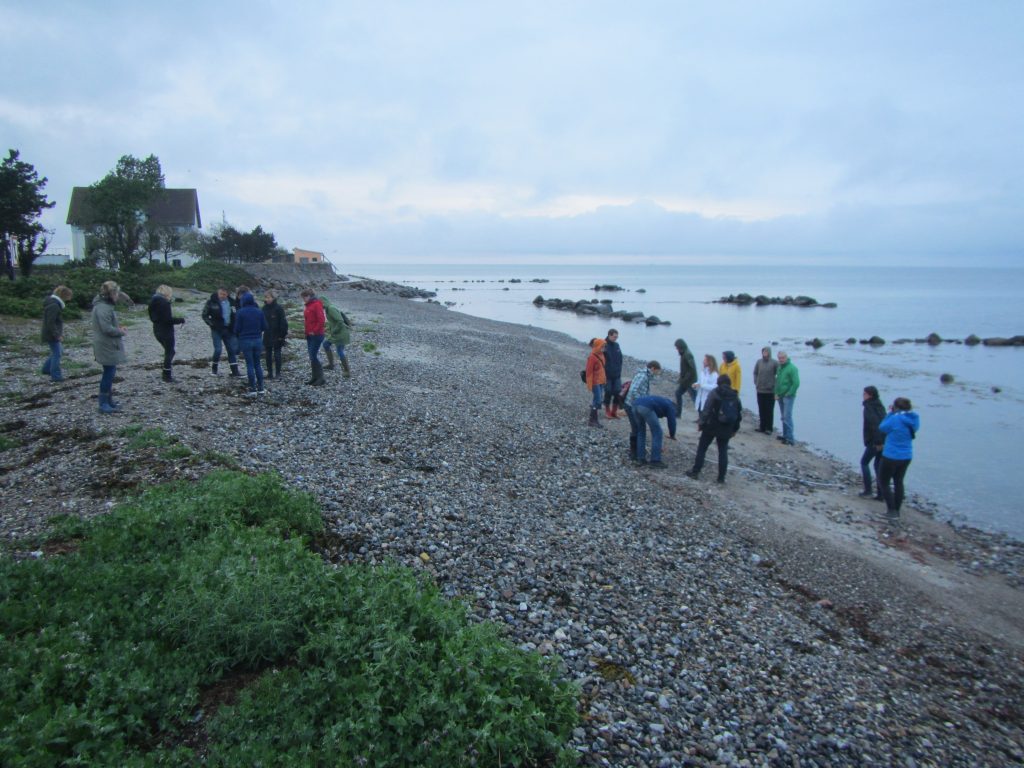
The next day, the group was split up in two parallel groups. One doing stuff like this:
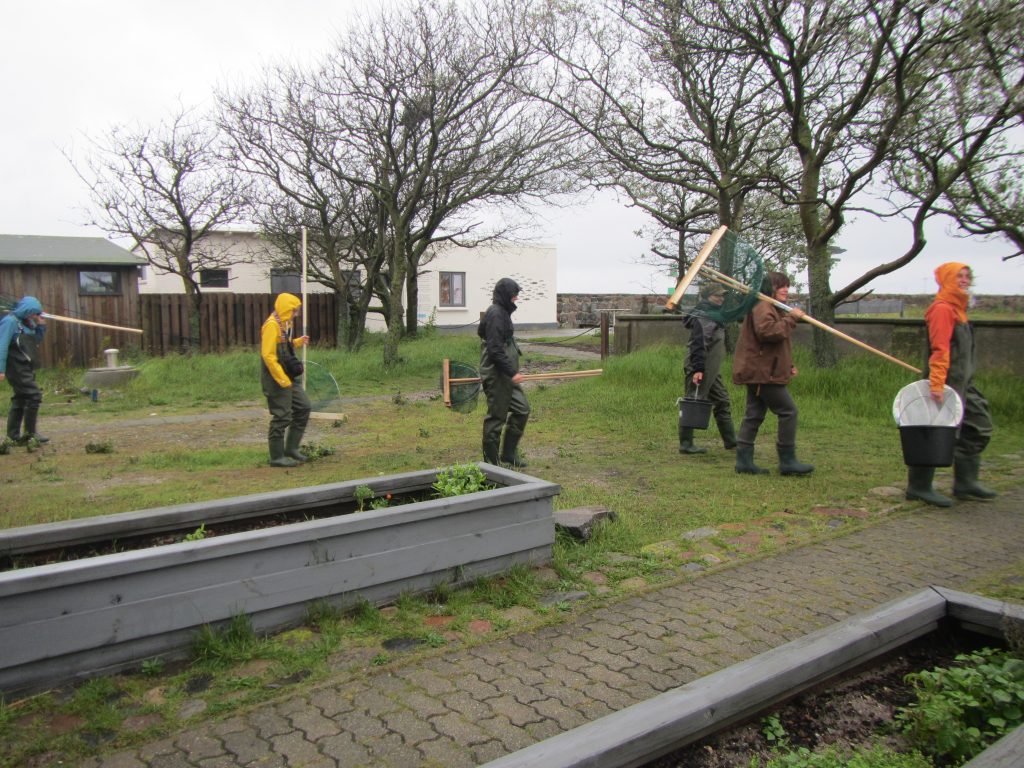
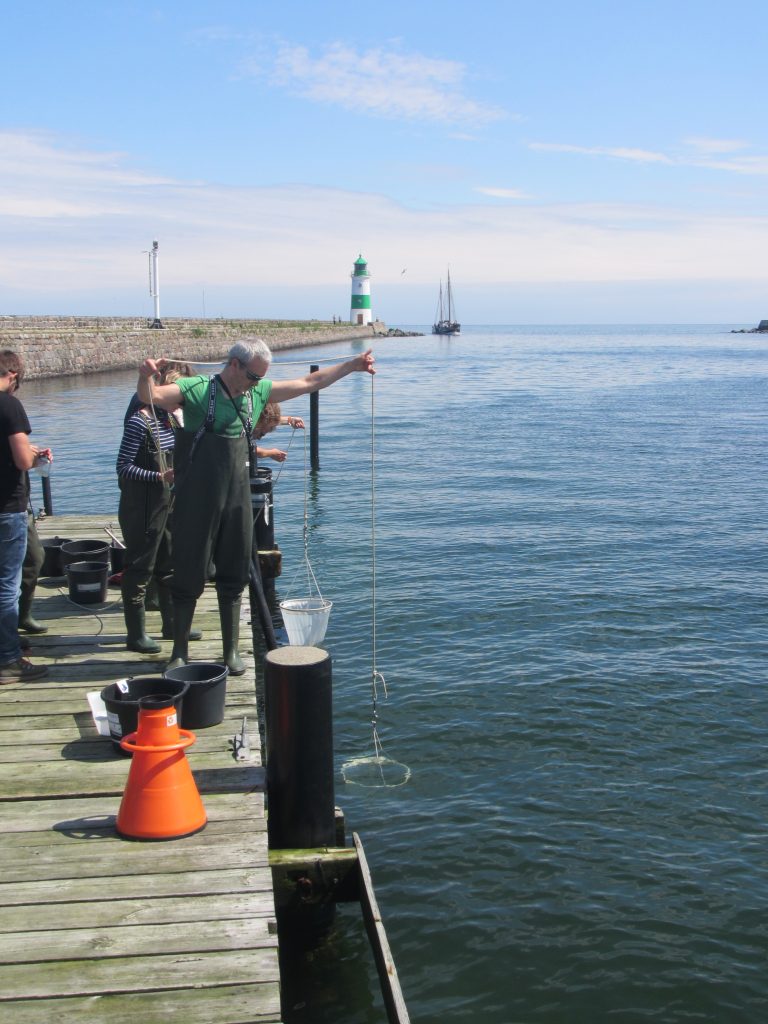
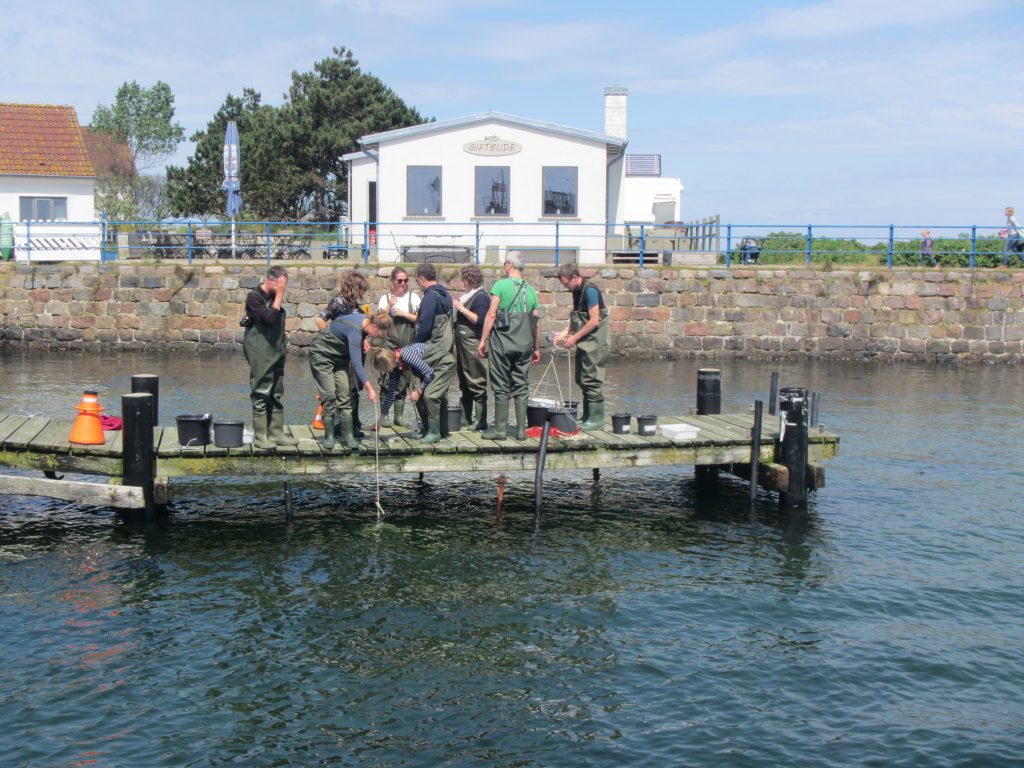
The other group, in which I was involved, doing stuff like this:

Obviously we had to do the melting ice cube experiment in a workshop on ocean physics!
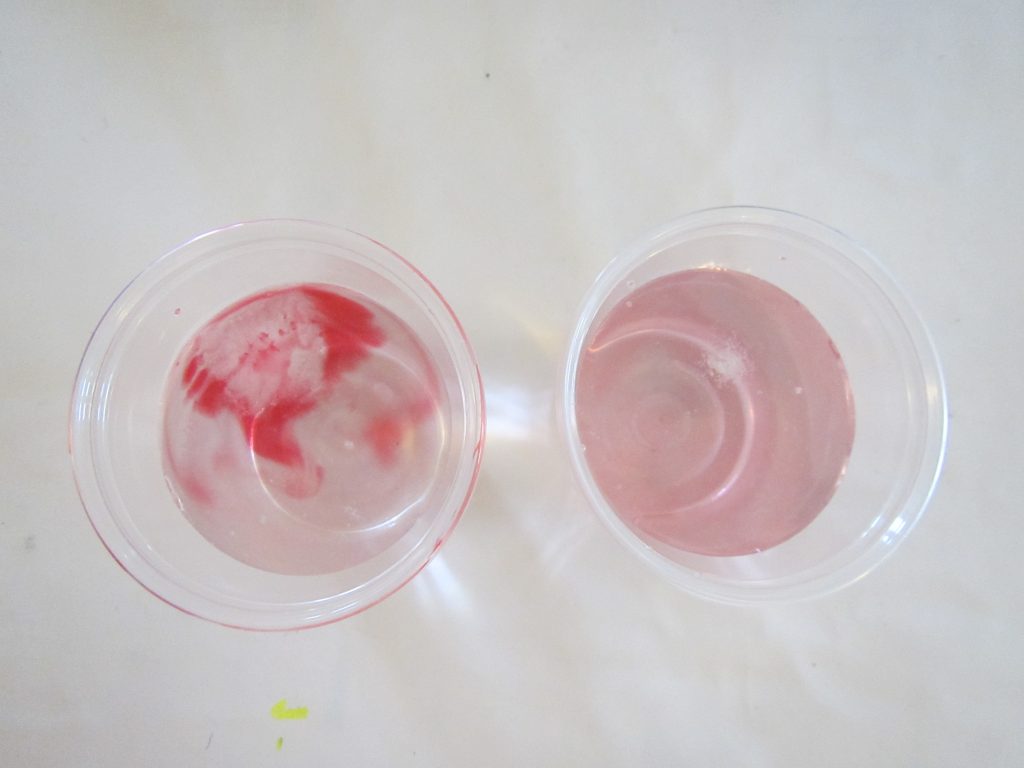
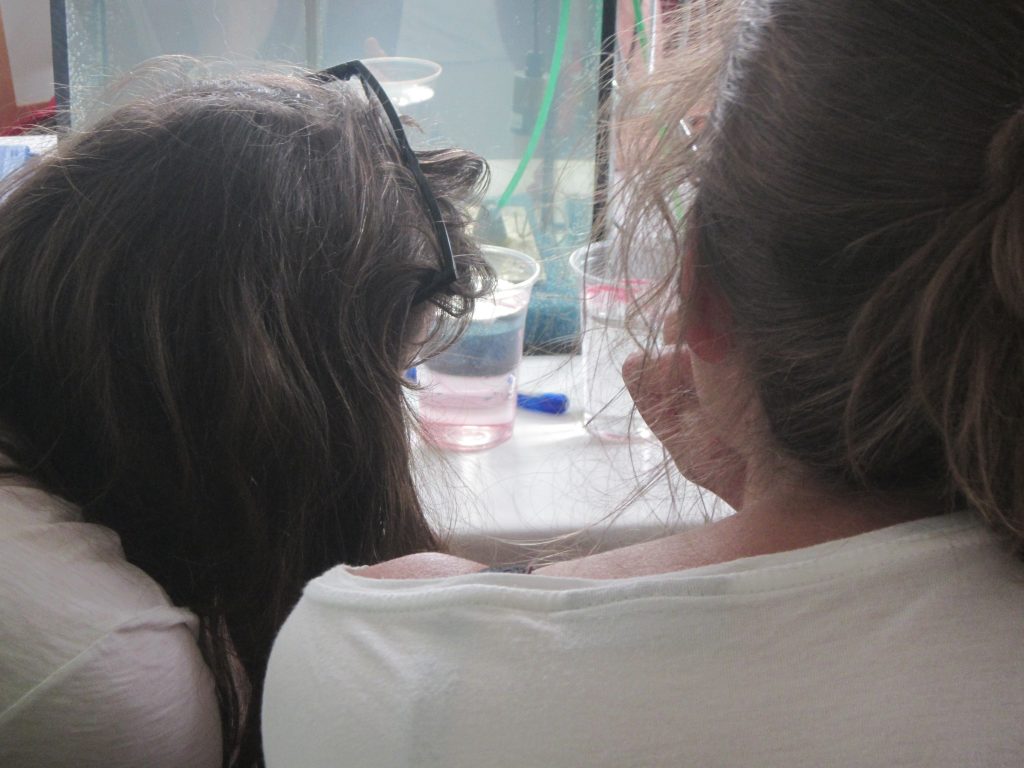
But Johanna and Dennis did tons of other cool stuff, too, like for example this demonstration of salt inflow events into the Baltic Sea:
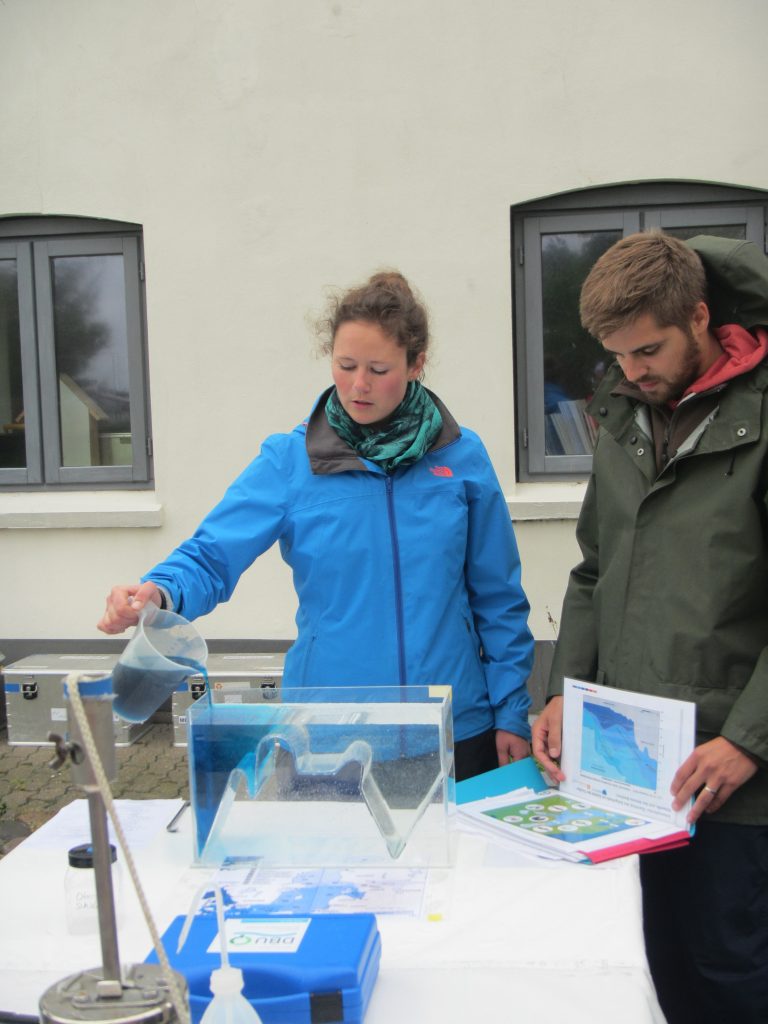
And again, the second time that same workshop was run in the afternoon for the second group of teachers. Amazing how quickly the weather changed!
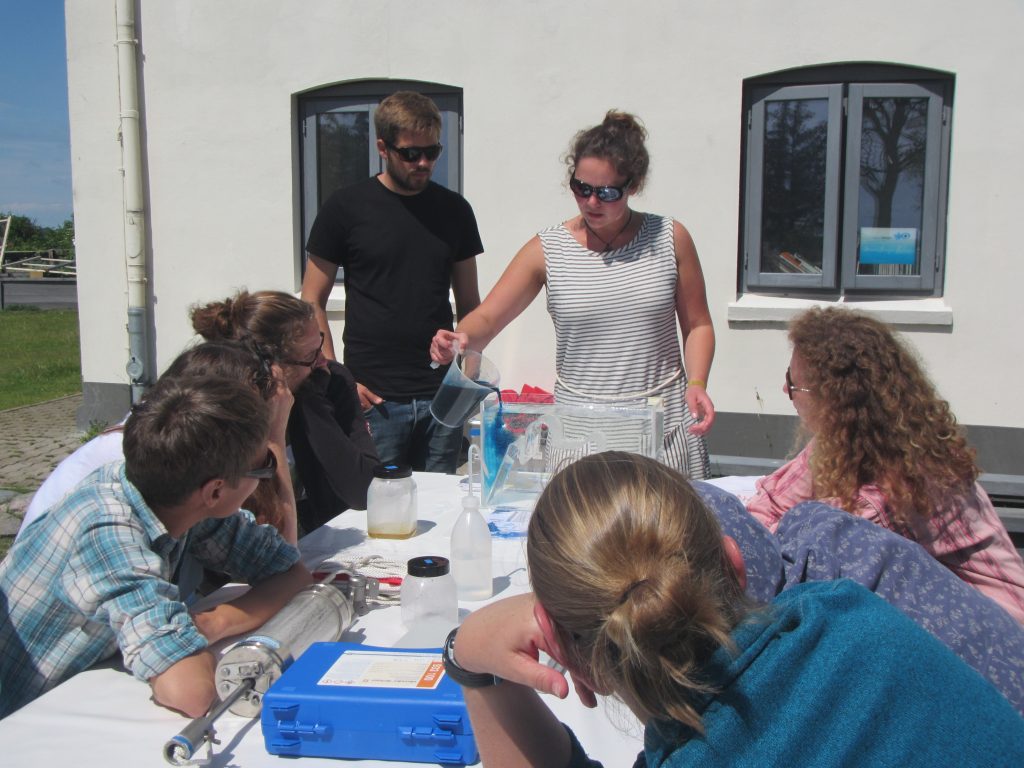
But of course our group also did some field work: Water sampling and then analysing nutrients, salinity, oxygen concentration…
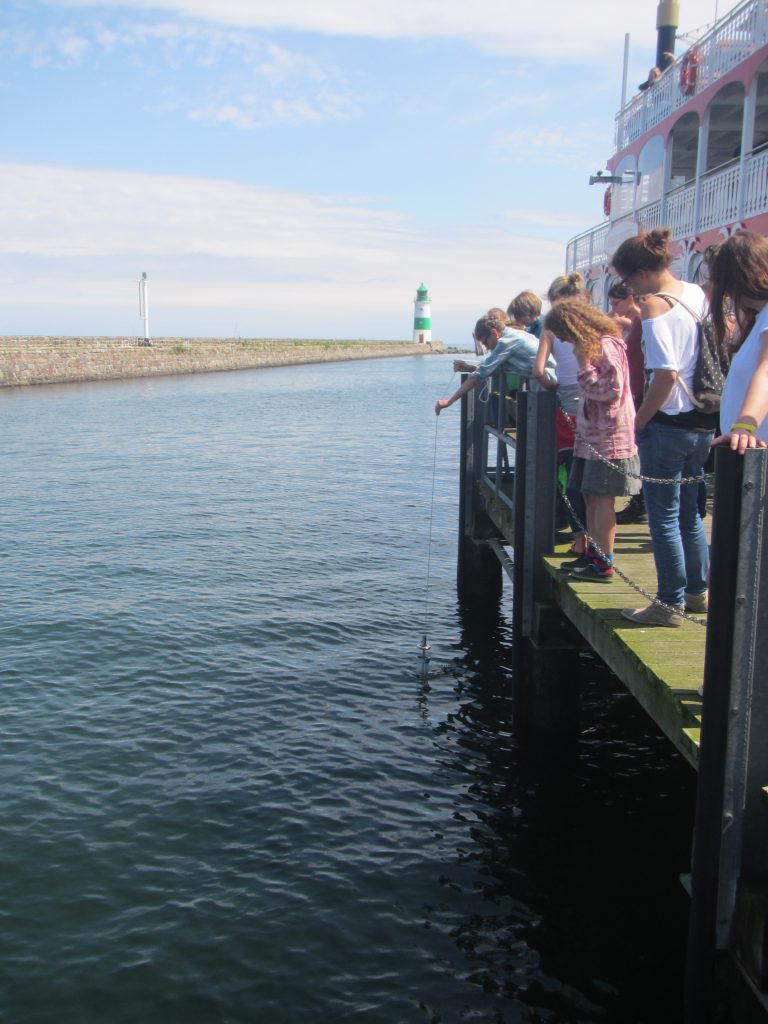
The next day, I got to see my first fish dissection. I know why I studied physics…
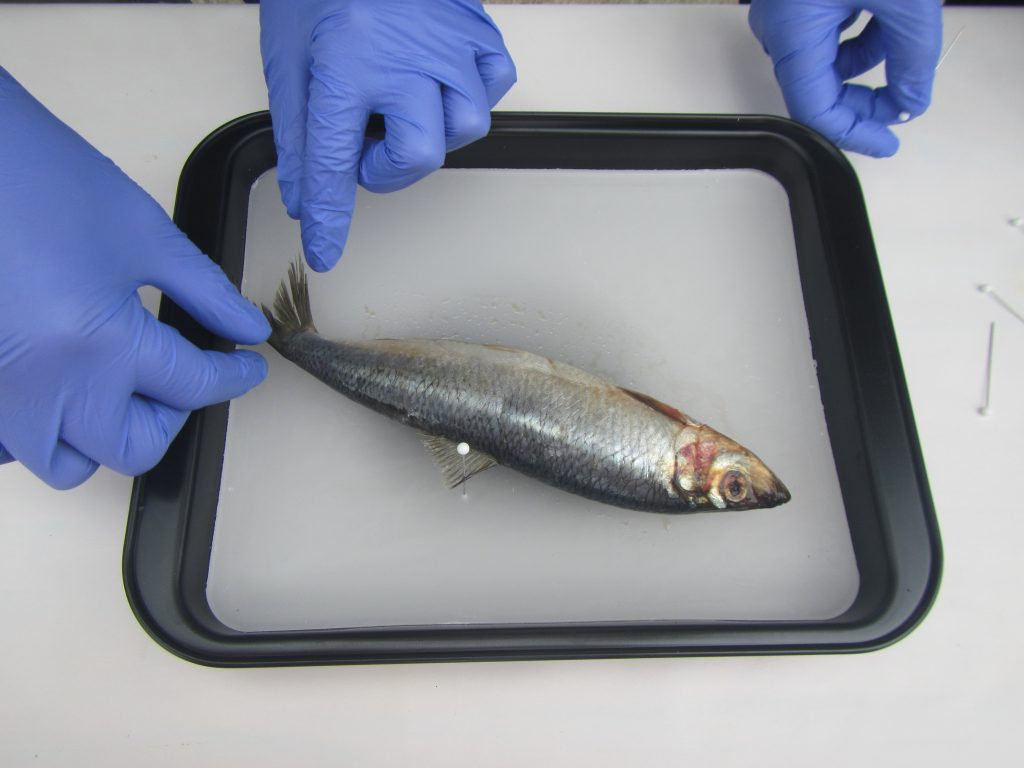
I am not showing you the gory pics here because that’s not what we do on this blog ;-)
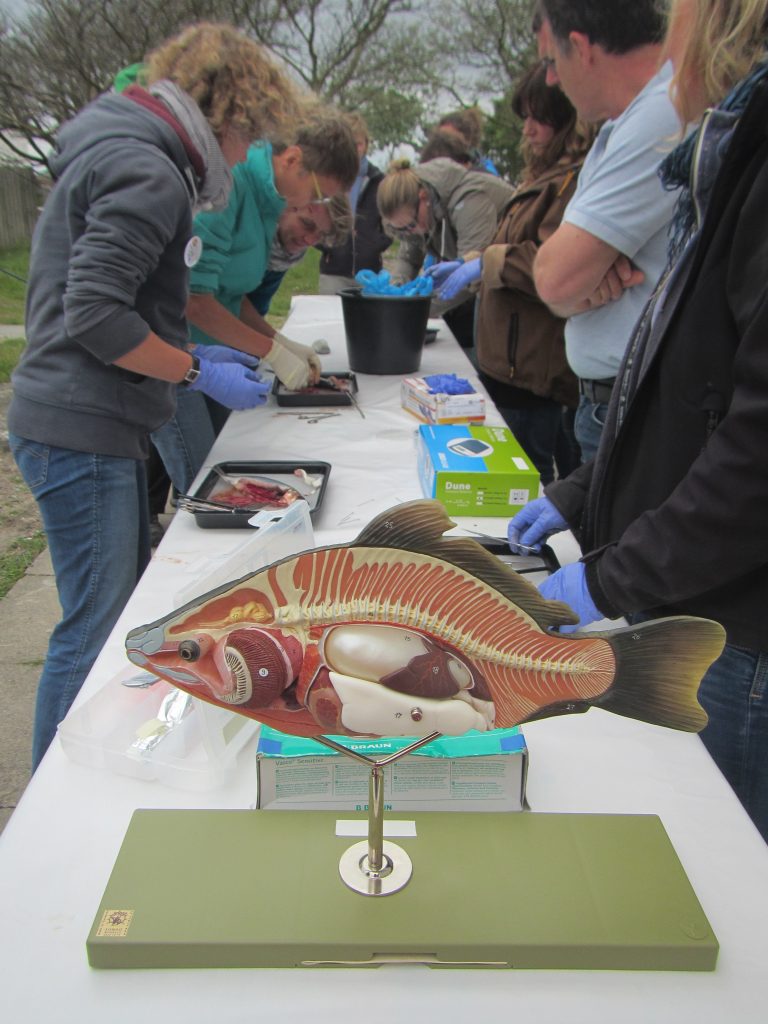
Also really cool: Those are baleens, those filters that whales use! Never touched them before.
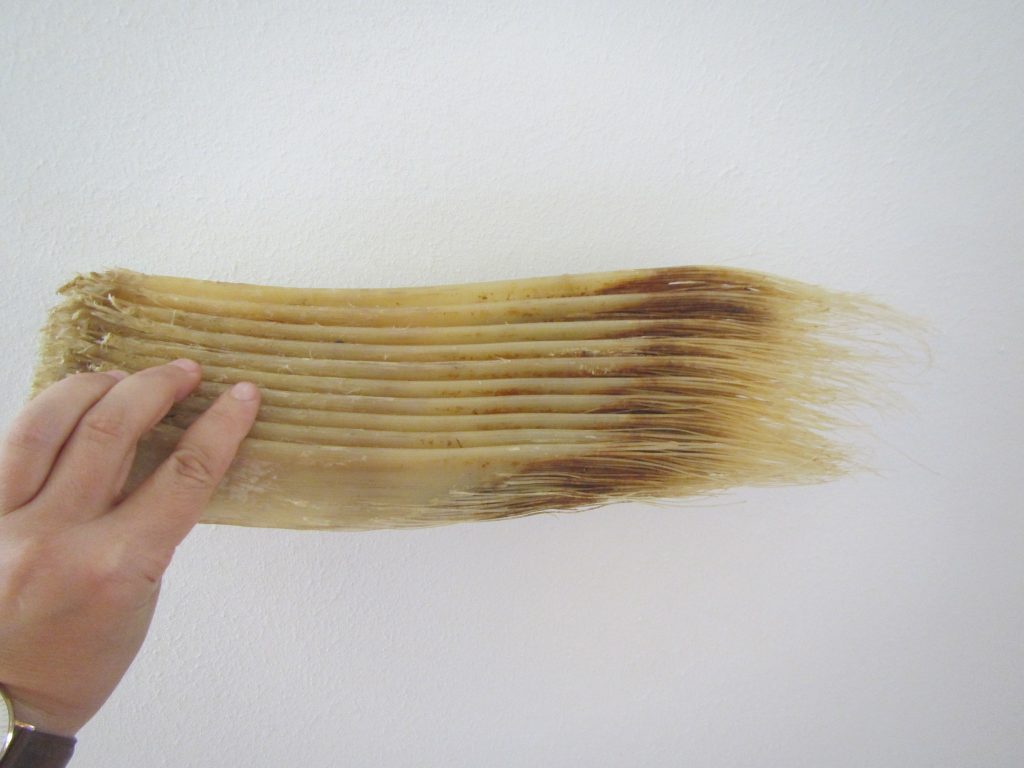
But we also got some time to enjoy the weather and play with our equipment: Those are Jeannine, Dennis and Johanna, who I had the pleasure to work with. It was great fun!
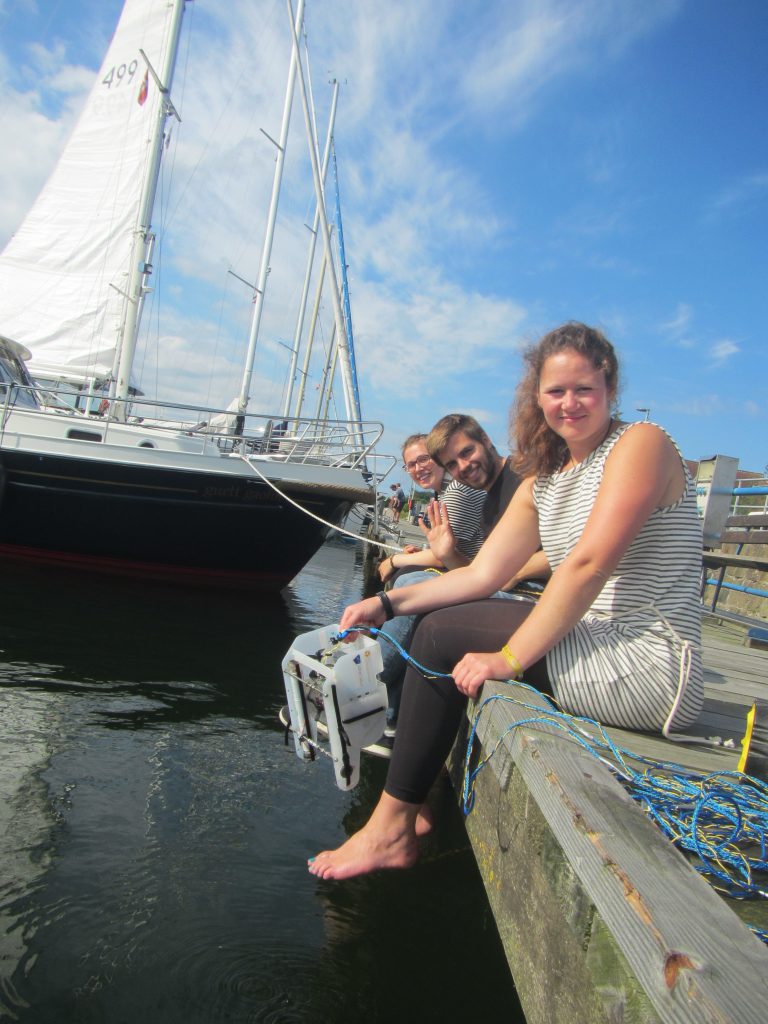
Even though the amazing weather only lasted for a short while, this is them arriving back on the main land with the last of three tours to shuttle everything back…
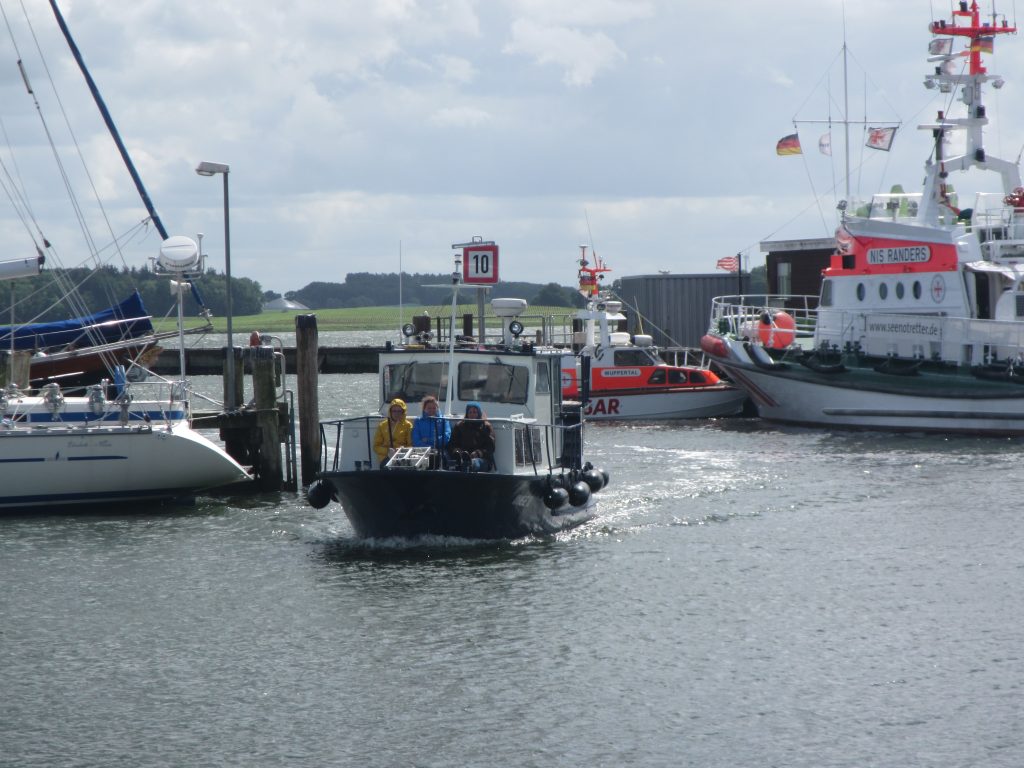
But I had a great weekend! And if you haven’t yet, go back and look at the lighthouse on Lotseninsel. I could spend years there, taking pictures from different angles and in different weathers… So pretty :-)
I love lighthouses <3
I love lighthouses. And here I am showing you a couple of pics of one of my favourite lighthouses: The one at Lotseninsel on the Baltic Sea coast. I spent only a weekend there to run a workshop at a teacher training by the Ozean:Labor, but the weather changed so much over those three days that I have plenty of very different pics. Enjoy! :-)


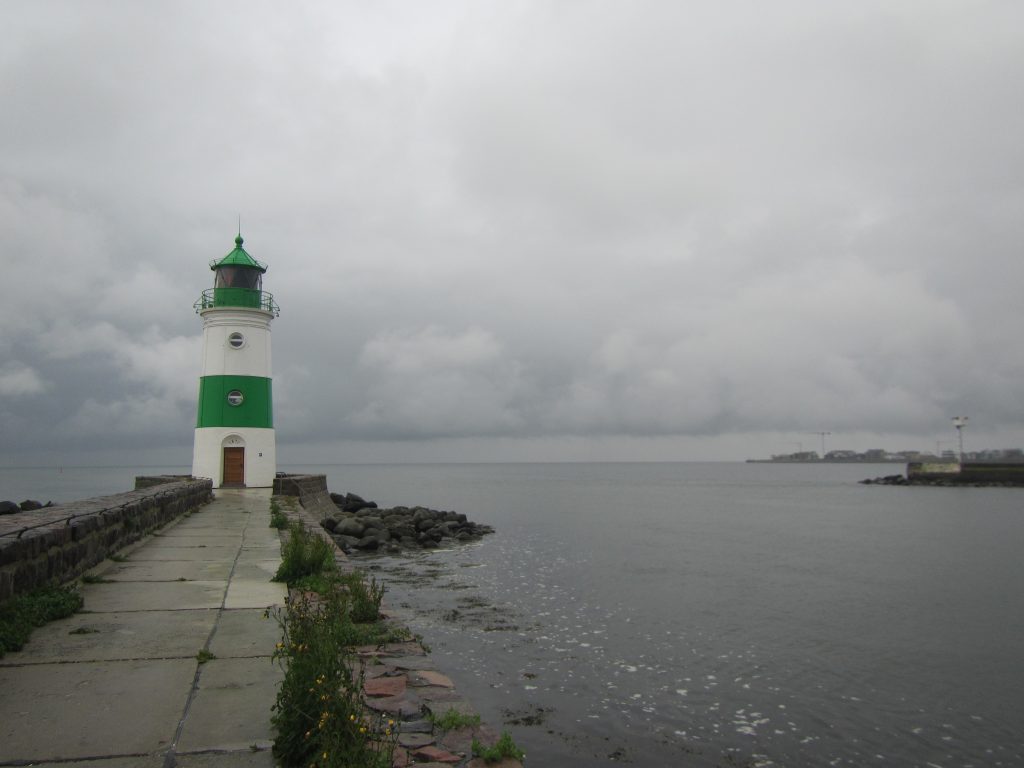
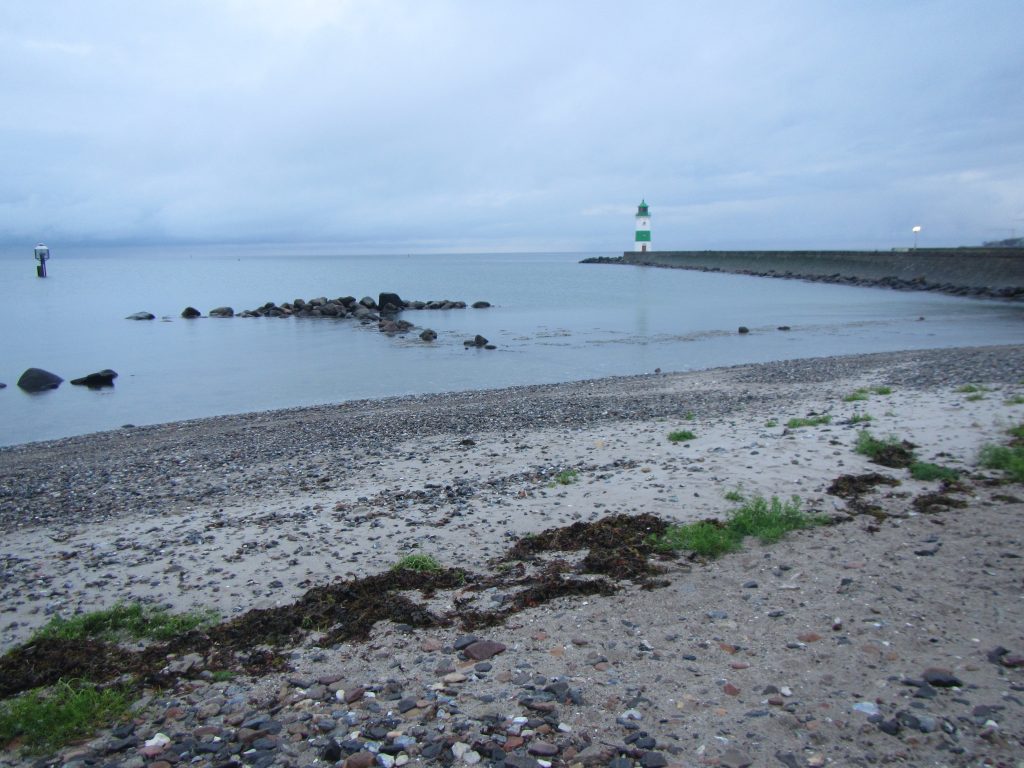

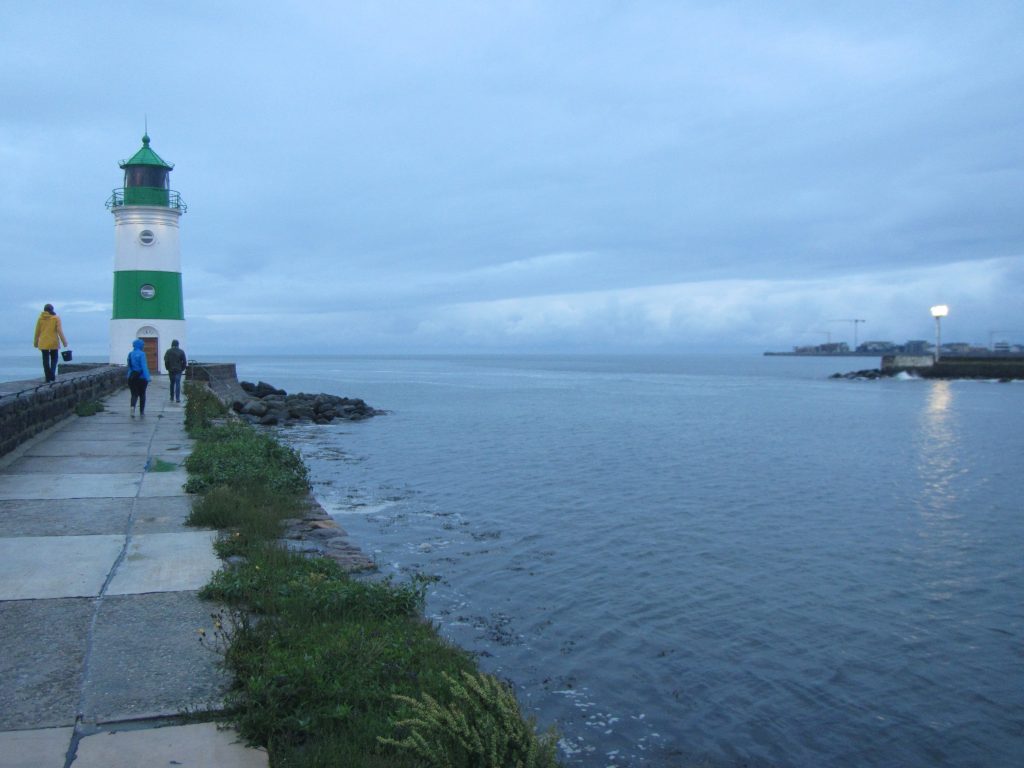
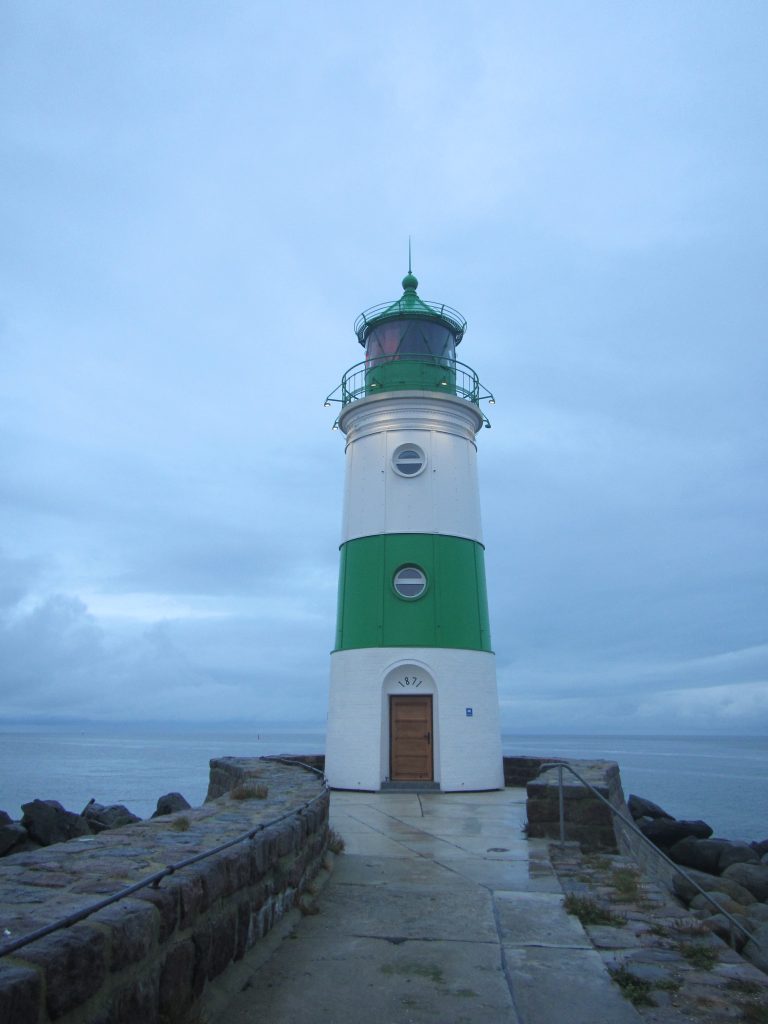
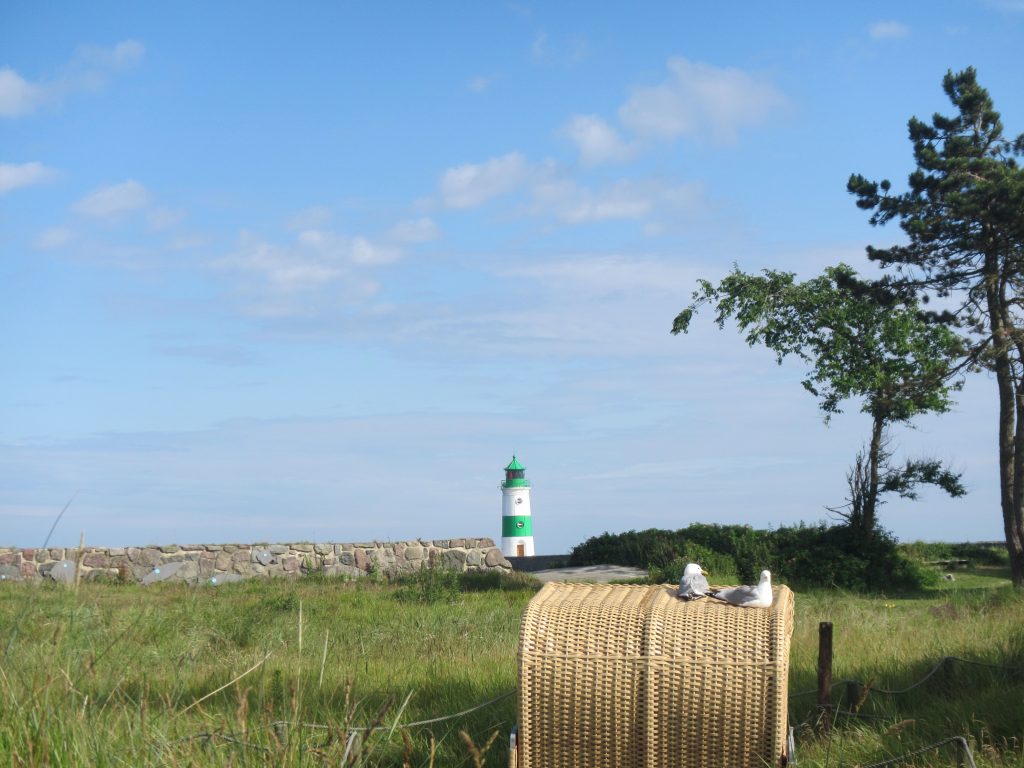

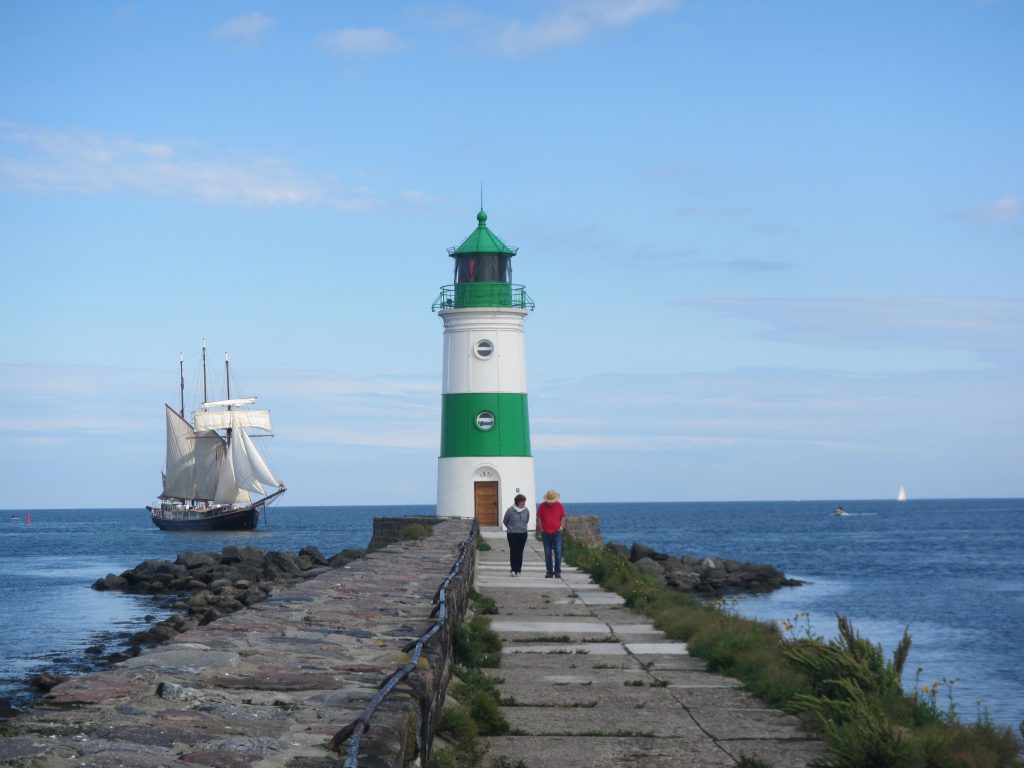
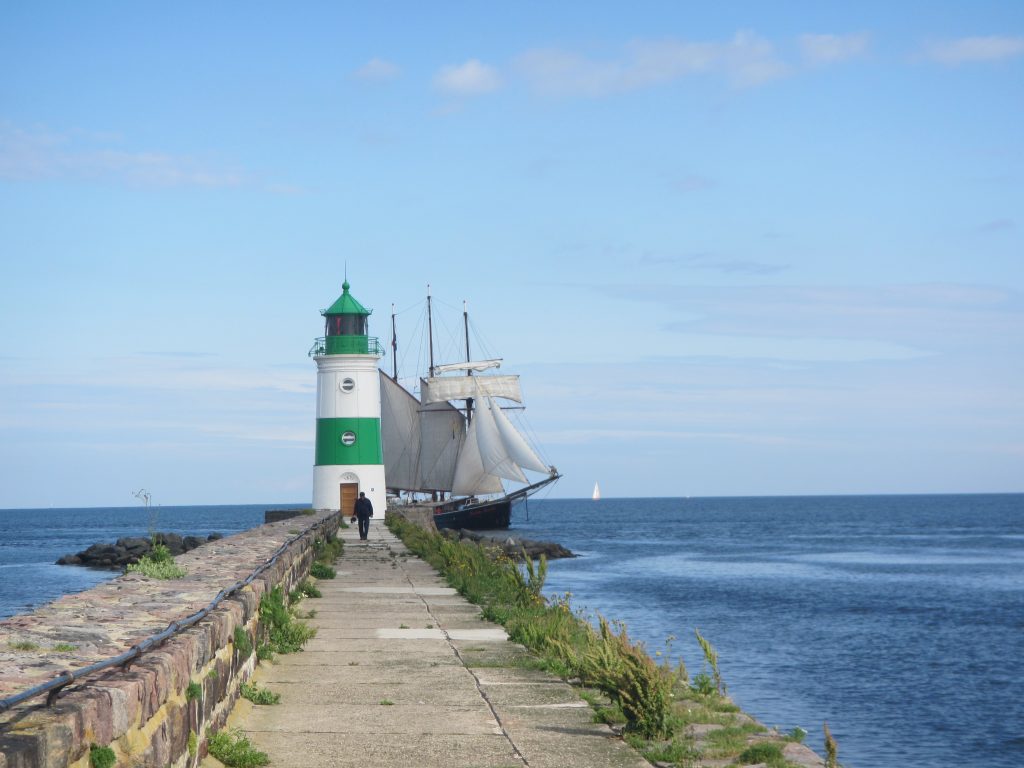
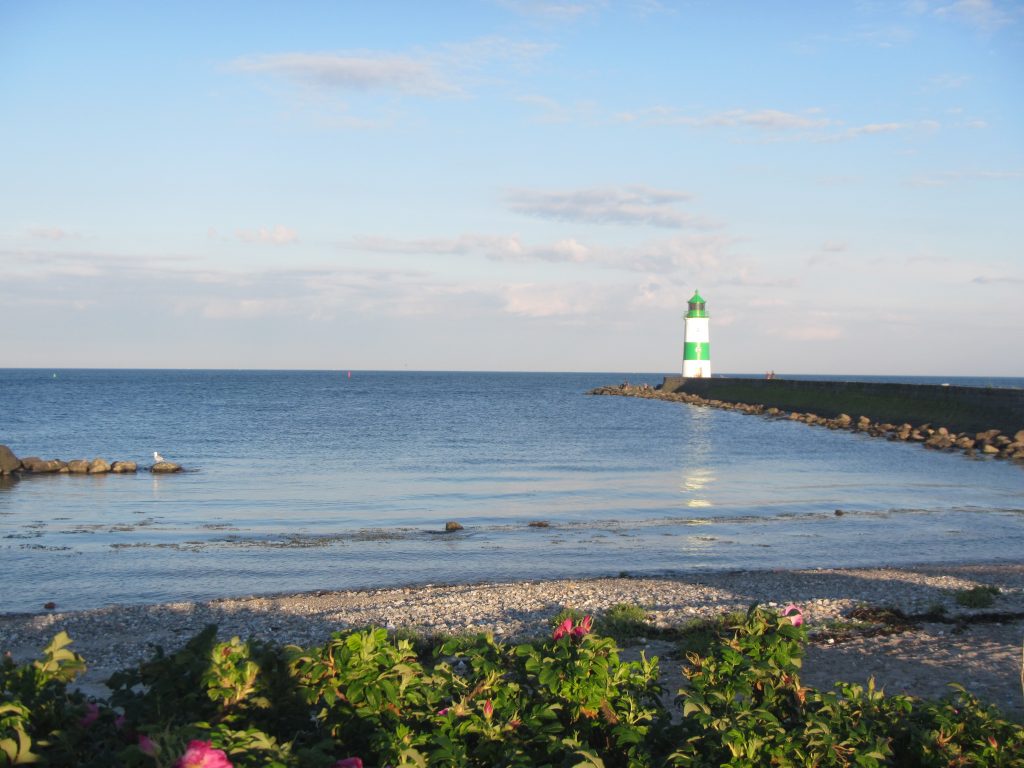
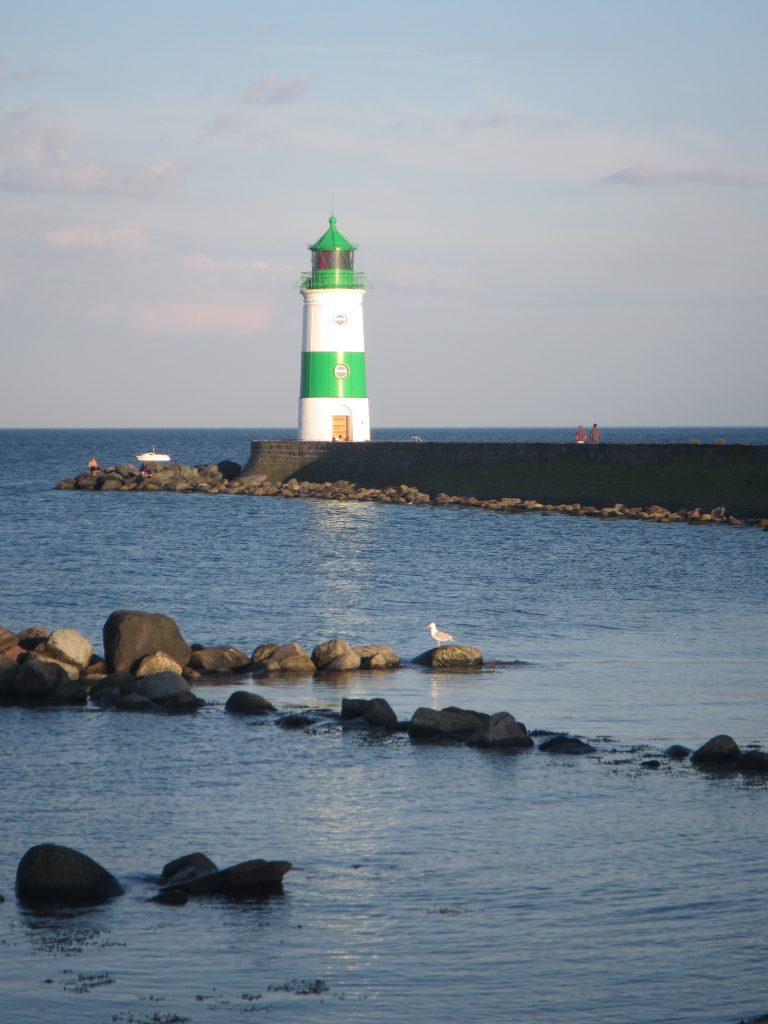
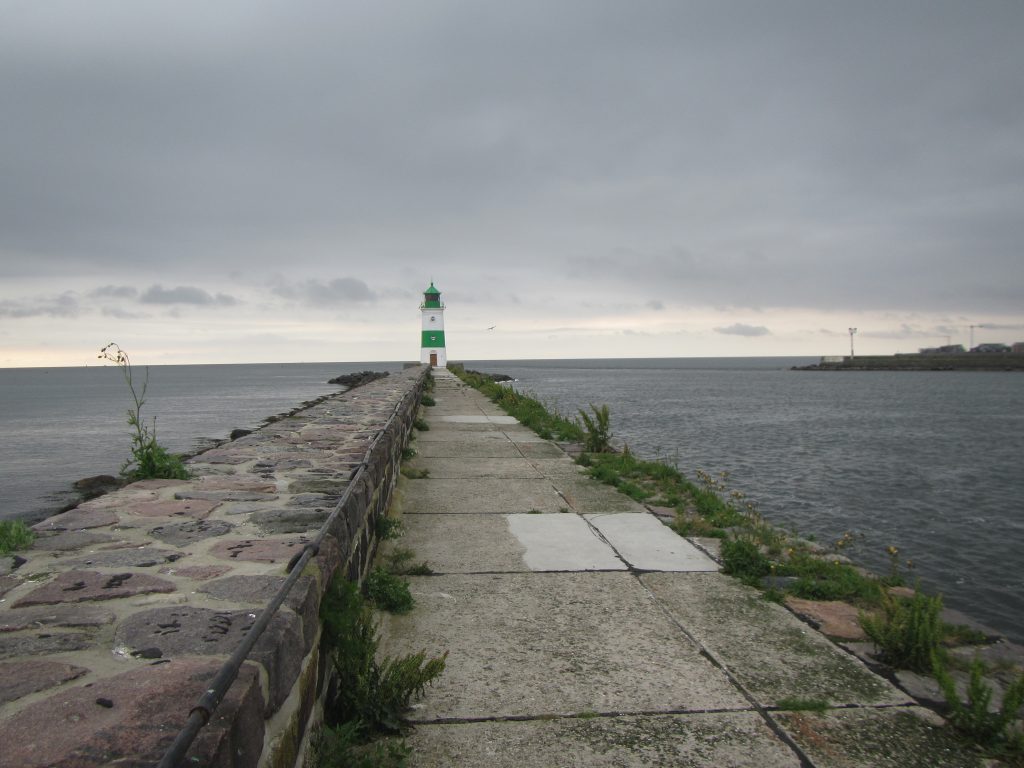
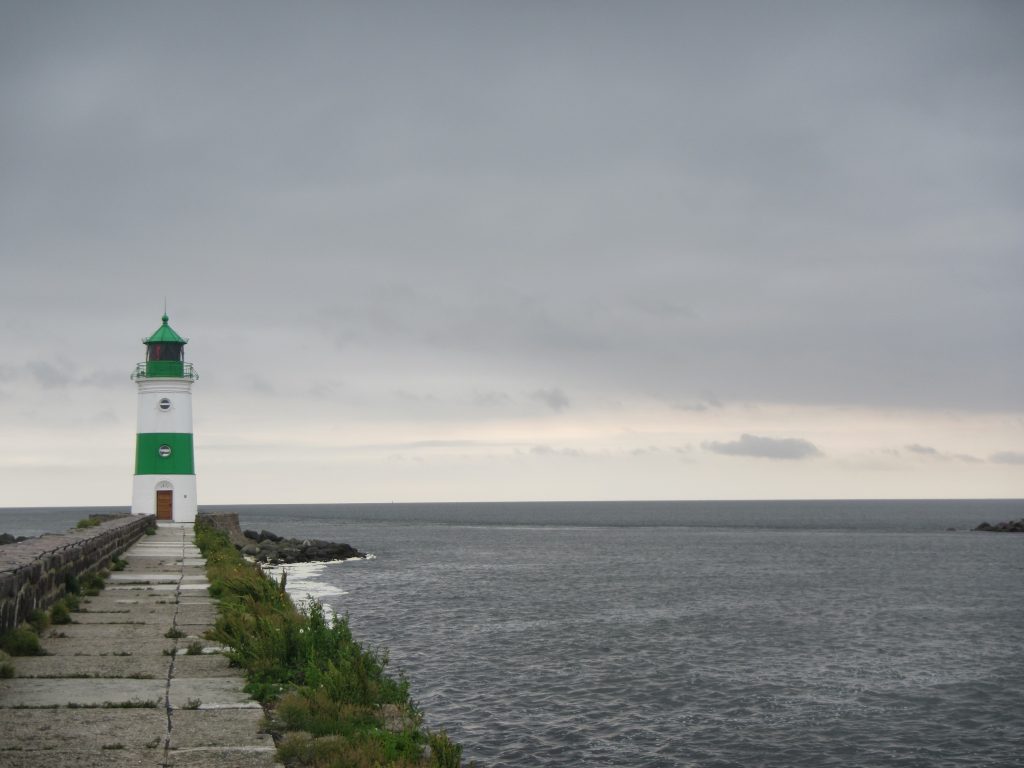
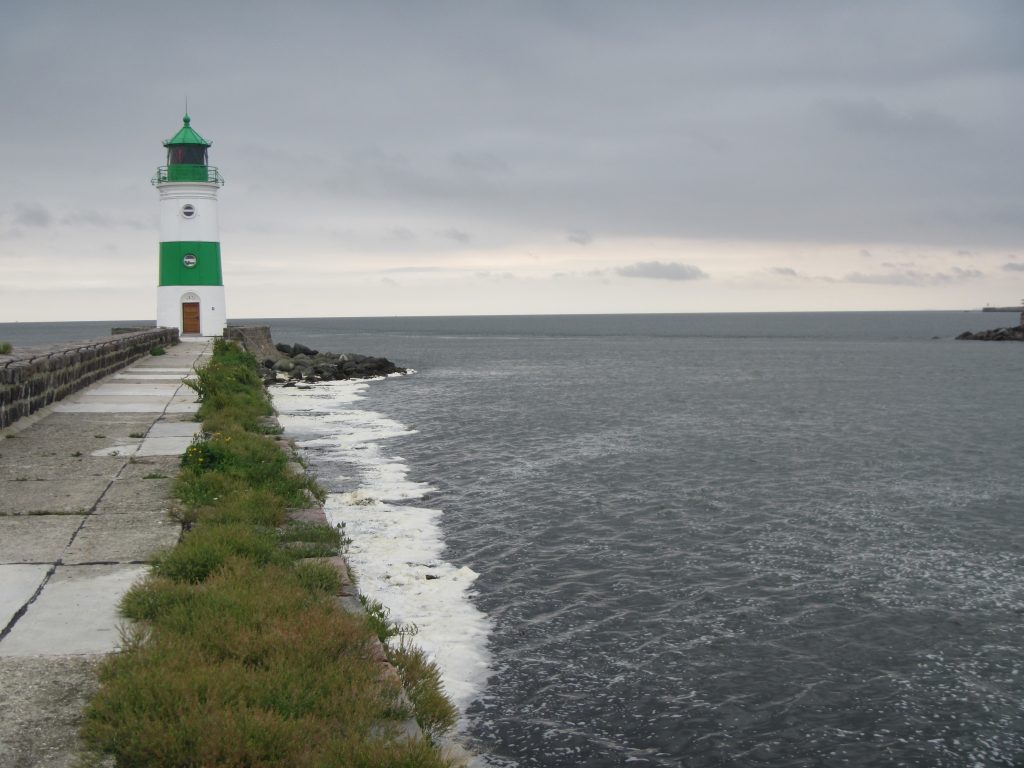

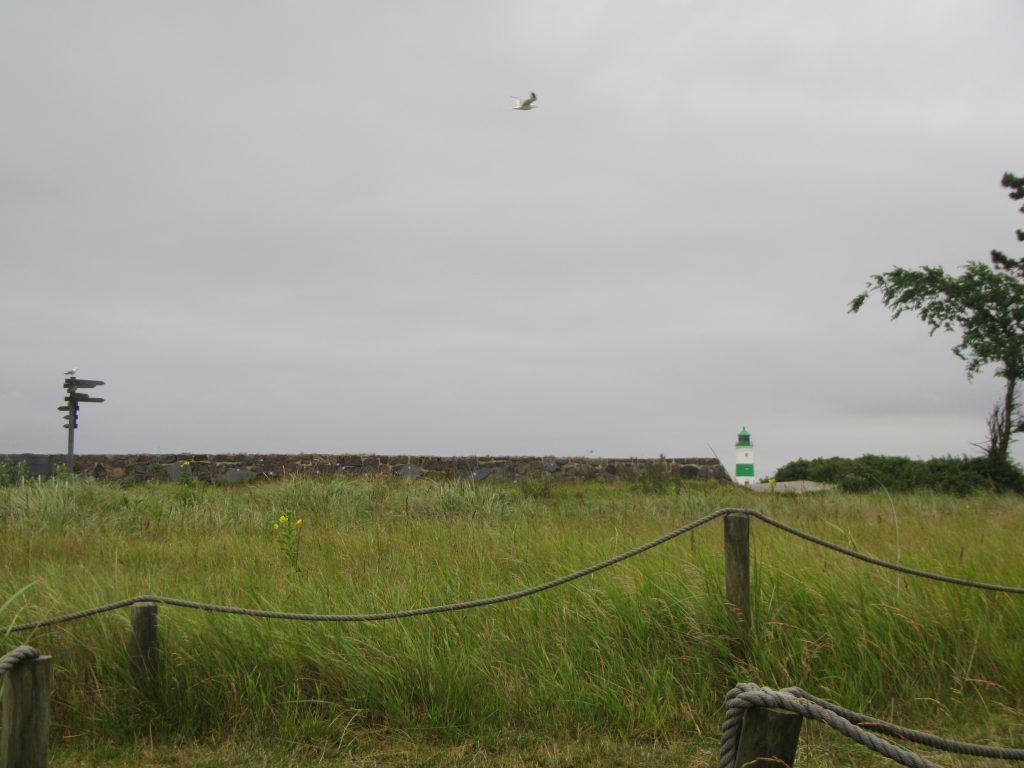
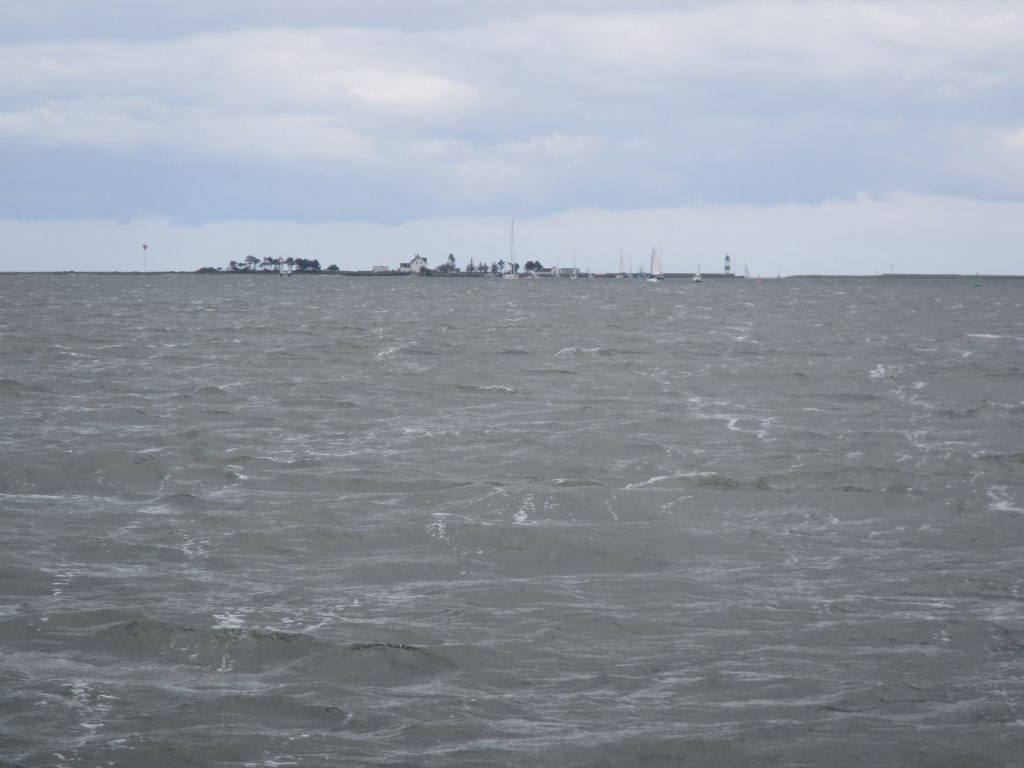
Reflected wake
The best ship-watching of the year happens during Kiel Week (even if I do a fair bit of ship-watching year round ;-))
But this year, I was absolutely fascinated with wake-watching. Look at the sailing ship below and its beautiful wake!
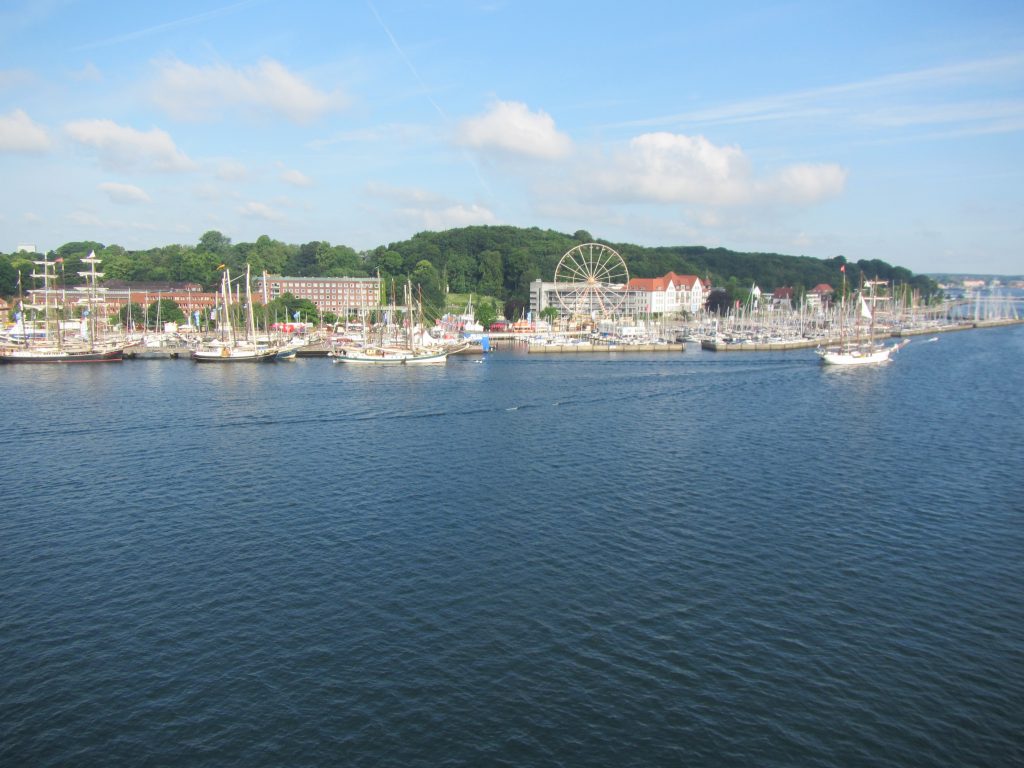
You very clearly see the streak directly behind the boat, caused by turbulence where the hull pushed through the water. And then there is the actual wake, fanning out from the ship.
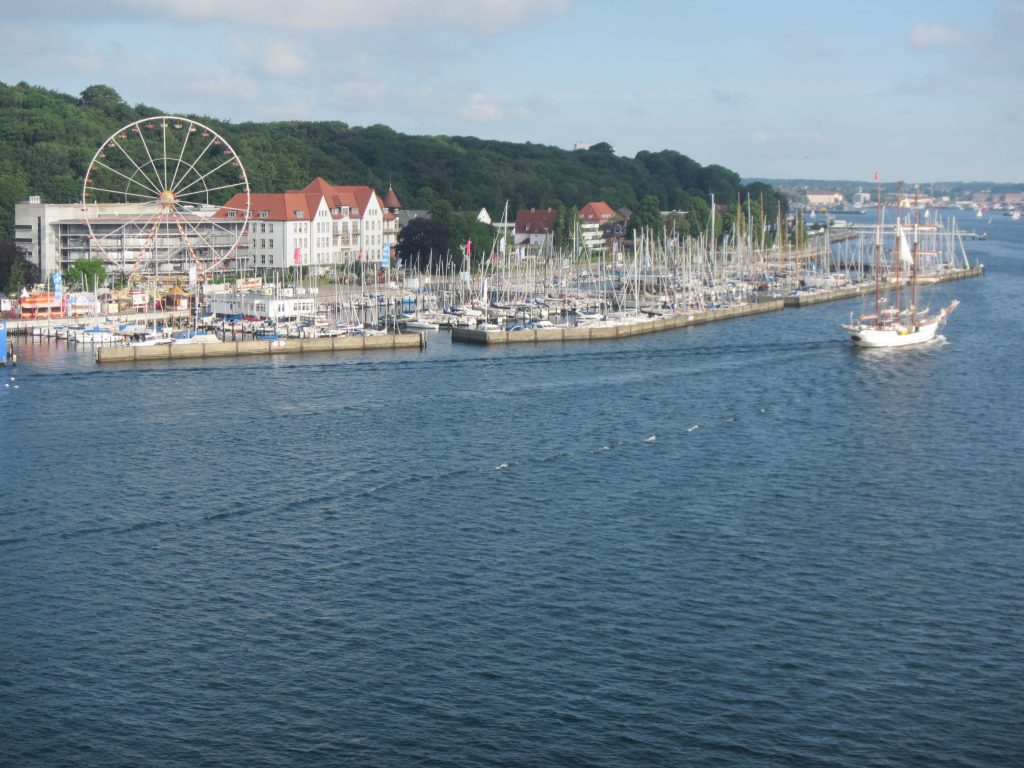
And then that wake gets reflected on a sea wall as the ship is sailing past!
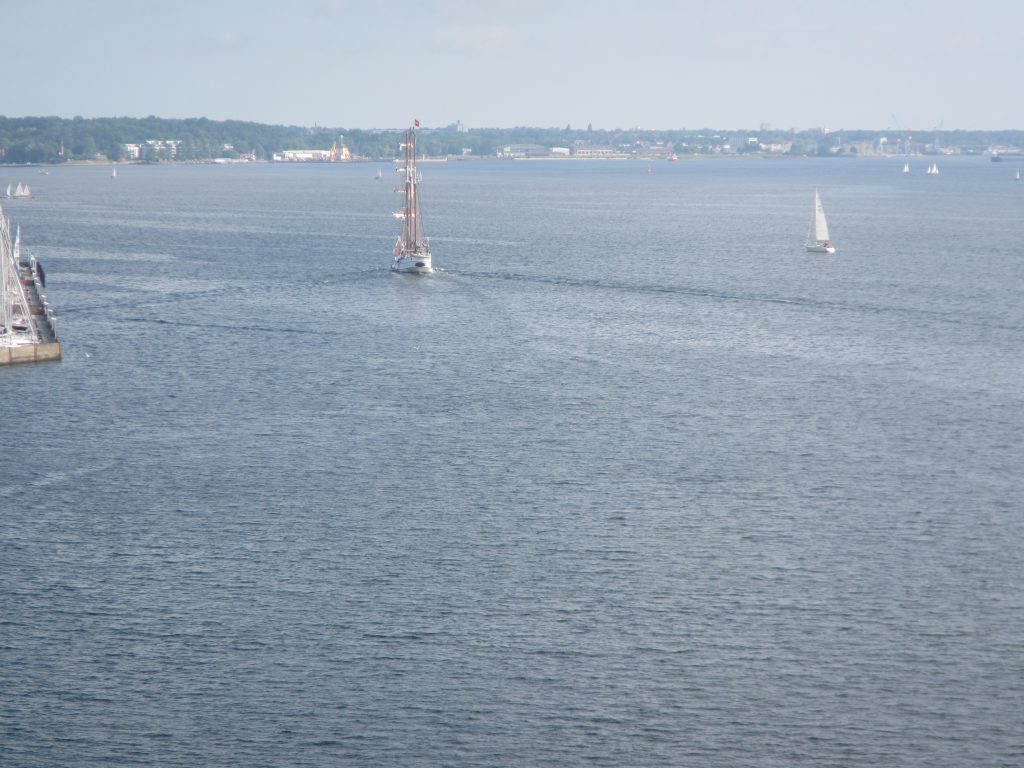
Watching things like this makes me happy :-)
Wave watching
Refraction of waves towards the beach
As you see from my parents’ attire and the lack of leaves on the trees, these pictures are not brand new. But still interesting: Do you see how the waves are bent towards the coast as they run into shallower water?
And can you believe I still have to look up which one is refraction and which one is diffraction to make sure, despite having a PhD in oceanography? They really should consider retracting that. I am pretty sure I “was instructed” (avoiding to say “learned”, since I clearly didn’t) about this in a lab during first year physics. On the other hand, I know where to look it up. Does that count?
And maybe it’ll help if I write it down once more:
Diffraction is what happens to waves behind slits or obstacles.
Refraction is what happens when waves run into shallower/deeper water (or into a different medium if we are talking about light waves) due to dispersion.
Does anyone know a nice “Eselsbrücke”/mnemonic/way to remember?
